#the subgenre that i would term
Text
i cannot overstate how Dynamic-y mafia movies are
#the subgenre that i would term#fucked up mafia boyfriend movies#which includes#mean streets#mikey and nicky#the irishman#heat 1995#reservoir dogs#once upon a time in america#midnight run#the deer hunter by proxy#novecento by proxy#midnight cowboy by proxy#assume all potential warnings apply to any of these movies#maybe scarecrow 1973 by proxy if u wanna push it#california split by proxy#of course the social network my beloved by proxy#becket 1964 by proxy
108 notes
·
View notes
Text
Dear Baby Bats - Goth Band Recommendations
As a middle sibling goth (I’ve been in the subculture for close to 10 years now, so not a baby bat but not an elder goth either), let me turn you on to some bands because we do not gatekeep in this house!! Also, if you want consistently good lesser-known & brand new goth band recs, go follow Awfully Sinister on TikTok and Instagram. He’s a DJ & has great recs. I've found so much music through him because it's really hard to keep up with all the new bands cropping up every year. You want to avoid the goth subreddit because they are extremely gatekeeper-y and argue over labels constantly. It’ll just confuse you, and they are not nice over there.
If you’re very new to the subculture, and you haven’t yet listened to all of Bauhaus, Siouxsie and the Banshees, The Cure, Sisters of Mercy, Christian Death, Cocteau Twins, Clan of Xymox, Joy Division, and Depeche Mode, go do so now. You'll want to know which of them you really enjoy the most because it will help you know which sub-subgenre(s) of goth you want to watch out for, and it'll tell you what to look for to find it. For example, Sisters of Mercy is the gothic rock subgenre, Christian Death is deathrock, Cocteau Twins is ethereal wave, Clan of Xymox is like the original darkwave, Joy Division is classic post-punk, etc.
I’ve bolded some of my absolute must-listen to goth bands, and I've put monthly Spotify listeners for each band so you know which ones deserve WAY more love. And in my pre-list ramblings for each OG band, I've given you some key terms to look up so you can more easily find music that's similar to what you enjoy. Okay, here we go:
If you like Bauhaus:
Bauhaus is a hard one because honestly, nobody really sounds like them, and they aren't really that closely associated with a specific sub-subgenre of goth. They have an extremely unique sound. They’re my favorite band of all time (I even have a tattoo for them, like I am devoted lol), but even I have a difficult time finding other bands that scratch their particular itch for me. These bands I’ve listed are as close as you’re gonna get imo.
Virgin Prunes (80’s band that has absolutely unhinged music in the way Bauhaus has unhinged music; one of my favorites; no one else does it like them and no one else ever will; I would actually give my left foot to see them live); 13.2k monthly listeners (this is actually physically painful to me, how is it this low!!! don't walk, RUN to go listen to them)
Alien Sex Fiend (80’s classic unhinged goth); 77k monthly listeners
Sextile (modern band that has some very Bauhaus-sounding guitar work at times); 147k listeners
The Danse Society (80’s unhinged goth; has similar experimental vibes to Bauhaus imo); 36k listeners
Sex Beat (80’s band); not even really on Spotify
Ritual Howls (modern band; I don’t know why it gives Bauhaus, but it does; one of the few modern bands that scratches that particular itch for me); 45k listeners
The Agnes Circle (modern band; one of my favorites; they have the right Bauhaus-like atmosphere for me); 52k listeners
Traitrs (I can’t explain why they remind me of Bauhaus, but they do; another one of my fave modern bands; they make me want to start levitating and doing the Ian Curtis dance in the same way Bauhaus does lol); 239k listeners
Paralisis Permanente (underrated 80’s; they have a lot in common with Bauhaus’s sound actually, def give them a try!); 54k monthly listeners
If you like Siouxsie and the Banshees:
Siouxsie is another one that's hard to pin down sound-wise because again, they don't really fit into one specific sub-subgenre, so all of these recs are just goth bands with female vocalists who have the same kind of powerful vocals that Siouxsie does.
Second Still (modern band; singer sounds a lot like Siouxsie to me at times); 69k listeners
Skeletal Family (80’s band; has the same “women in punk” vibes that Siouxsie has); 55k listeners
Xmal Deutschland (80’s band; has the same powerful vocals that Siouxsie has; makes you wanna go stupid go crazy the way the Banshees do); 73k listeners
Secret Shame (modern band w/ w woman singer; has the same rage that Siouxsie songs have to me, especially early Siouxsie); 6k listeners (let's get those numbers up, folks!!!)
Rosegarden Funeral Party (modern band w/ a woman vocalist); 57k listeners
Mephisto Walz (90s & 2000s; sounds so much like the Banshees at times); 56k listeners
If you like Depeche Mode:
For Depeche Mode enjoyers (which DM is kind of on the fringes of what’s considered “goth,” but they’re so entrenched in the subculture that I included them anyway), you’re gonna want to delve into modern goth playlists that have a lot of EBM (electronic body music) and modern goth that leans towards synthpop/synthwave. So those are the kinds of playlists you’ll want to search up for similar sounds to DM.
Nuovo Testamento (modern band; combines post-punk and pop elements in a way that’s very similar to Depeche Mode; lots of fun live, and they have a good sound); 25k listeners
Boy Harsher (modern band; relies heavily on synth; feels like it should be playing at every goth club); 558k listeners
ULTRA SUNN (modern band; singer sounds like Dave Gahan); 217k listeners (they just blew up on tiktok recently, which explains why this just skyrocketed since the last time I was on their Spotify page lol; good for them, good for them, they deserve it)
Ministry's first album, which was synthwave/synthpop before they went industrial (this is one of my all-time favorite albums)
French Police (modern band); 252k listeners
Closed Tear (modern band); 152k listeners
Night Sins (modern band); 33k listeners
Panic Priest (modern band; vocals sound decently similar to Dave Gahan & there is a lot of reliance on synth; In All Severity is a gorgeous song); 5k listeners
Fad Gadget (underrated 80’s band; I just feel like if you like DM, you’re also gonna like this band); 58k listeners
If you like The Cure:
You'll be hard-pressed to find a goth band that wasn't influenced by The Cure, so I really can't give you any key terms for what to look up lol. They also changed their sound so frequently that it entirely depends on what era of The Cure's music you're looking to find similar music for.
Vision Video (modern band; combines post-punk and pop elements like The Cure does; one of my fave modern goth bands; they are INCREDIBLE live); 52k listeners (I'm gonna need y'all to get a song or two of theirs to blow up on tiktok expeditiously lol)
Urban Heat (modern band; great live); 36k listeners
The Chameleons (80’s band; very underrated; they are also very good live); 167k listeners
House of Harm (modern band, very new; also very good live; has pop elements); 44k listeners
Deceits (modern band, another very new one); 28k listeners (it's crazy how much this number has grown the past two months because it was in the single thousands not that long ago; everyone say thank you, tiktok)
Drab Majesty (modern band; their instrumentals remind me of The Cure); 172k listeners
Double Echo (modern band; their instrumentals also remind me of The Cure); 15k listeners (let's get these numbers up!!!)
The Bolshoi (underrated 80’s band that combines new wave and goth elements in a similar way to The Cure); 114k listeners
The Essence (underrated 80s band that sounds so much like The Cure it’s actually insane, but they’ve got their own sound too; they’re like a perfect blend of all of The Cure’s different sounds); 25k monthly listeners
Miss Teen America (brand new band from NYC! They only have one single out right now, and it’s well worth listening to); 940 monthly listeners (y’all know what to do!!! Let’s get those numbers up, up, up!) link to their single: https://open.spotify.com/album/4nvdZeUVLLrMv3tEziCqm7?si=2WVS7-eYQLGR7Id3wLiKhg
If you like Clan of Xymox:
Most of these bands will be modern ones because Clan of Xymox was honestly way ahead of their time. (They are also amazing live, so go see them before they eventually call it quits!) For playlists that are full of their vibe, you’re gonna want to look up “darkwave” playlists and also some EBM. Clan of Xymox pioneered darkwave, so any darkwave band you listen to is gonna be influenced by their sound in some way or another.
Harsh Symmetry (modern, very new; very heavily relies on synth); 29k listeners
Ssleeping Desiress (modern band; instrumentals similar to Xymox); 55k listeners
Twin Tribes (probably my favorite modern goth band; they are fucking incredible, and I’m dying to see them live); 276k listeners
ACTORS (modern band; heavily relies on synth); 86k listeners
Mareux (modern; heavily relies on synth); 4.8 million listeners (this is wild!!!! everyone say thank you, tiktok)
Sixth June (modern); 23k listeners
Plastique Noir (modern); 40k listeners
Rendez Vous (modern); 160k listeners
Minuit Machine (modern); 97k listeners
If you like Christian Death:
All of these recs will be deathrock recs or goth bands that heavily leaned on punk sounds. So if CD is the OG goth band you’re most fond of, you’re gonna want to delve into deathrock playlists for similar sounds.
Asylum Party (80’s band); not on spotify
45 Grave (80’s band); 47k listeners
Voodoo Church (80’s band; probably my favorite out of this bunch; I actually like them more than Christian Death); 7k listeners (let's get these numbers up immediately!!!!)
Ausgang (80’s band); 2k listeners (WHAT; they deserve so much more, damn)
Corpus Delicti (90’s band; they are very good; they sound the least like Christian Death on this list imo); 26k listeners
13th Chime (80’s band; very underrated); 6k listeners
The Birthday Party (80’s band; very unhinged sound); 54k listeners
UK Decay (you know, I actually don’t know what era they’re from; unhinged sound); 1k listeners (omg)
Super Heroines (underrated 80’s band); 2k listeners (you see what I meant about underrated?)
Specimen (80s band; this one could have just as easily gone under Bauhaus tbh, but the vocals are generally higher pitched than Peter Murphy’s, so I put them under this category); 102k listeners
Sex Gang Children (80’s band; just so unhinged & I love them for it); 27k listeners
Suspiria (90s, I think? I don’t actually know); barely on Spotify but 27k listeners
Theatre of Hate (80s); 7k listeners
Bloody Dead and Sexy (2000s, I think); 44k listeners
If you like Cocteau Twins:
Cocteau Twins’ early sound is usually categorized as “ethereal wave” goth, so those are the playlists you’ll want to look up if you enjoy their early sound. If you like their later sound, you’re gonna want to lean more towards shoegaze for similar vibes.
Dead Can Dance (80’s band; NO one, and I mean NO ONE, was doing it like Dead Can Dance; so fun to dance to in the goth club); 332k listeners
Lycia (90’s band; their music is very transcendent); 20k listeners
Linea Aspera (modern band; gorgeous woman vocals; honestly, their music is just very beautiful); 67k listeners
This Mortal Coil (formed in the 80s; some songs feature Elizabeth Fraser & Robin Guthrie from Cocteau Twins, but even the ones that don’t still have an ethereal vibe similar to CT; Sixteen Days/Gathering Dust is just like the best song ever); 310k listeners
If you like Joy Division:
All of these bands will be ones that sound very classically post-punk, so those are the playlists to search out; emphasis on "classic" because post-punk is a very broad term that gets applied to a lot of music. I would argue that Joy Division has had the most influence out of all the OG goth bands on the current goth sound/goth renaissance we're going through right now, so there are a LOT of bands out there for you if you’re a JD fan.
Molchat Doma (modern band); 2.5 million listeners (wow lol, they've grown so much over the past two years, it's actually insane; good for them)
Soviet Soviet (modern band); 152k listeners
Fearing (modern band; very good live); 30k listeners
Ploho (modern band); 146k listeners
Pink Turns Blue (criminally underrated 80’s band; they are SO good live); 98k listeners (this is an actual travesty, this band is way too good to not even be in the hundred thousands)
The Sound (another incredibly underrated 80’s band); 119k listeners
This Cold Night (modern; has the deep vocals of Joy Division and the driving bass); 150k listeners
Bleib Modern (modern); has very similar vocals to Red Lorry Yellow Lorry, which is a band listed under the Sisters of Mercy section of this post, so if you end up liking this band, you should also listen to Red Lorry Yellow Lorry & vice versa; 36k listeners
Lebanon Hanover (modern; has the existential angst that Joy Division always ignites in me); 936k listeners (this is crazy, holy shit!!!!!! go, Lebanon Hanover, go!! now if only they would tour the damn US)
She Past Away (modern; deep vocals); 226k listeners
Belgrado (modern; woman vocals!); 18k listeners (they deserve better than this!!)
Leonora Post Punk (modern; Mexican goth band w/ Spanish vocals, so support them! They’re amazing! They have those deep vocals you want when you’re looking for a similar sound to Joy Division); 56k listeners
O. Children (modern; has the deep vocals & interesting bass lines that Joy Division was known for; great band); 29k listeners
If you like Sisters of Mercy:
This is one of my least favorite goth subcategories, which is odd because I actually love Sisters. But if you’re looking for a lot of music that sounds like SoM, I’d suggest delving into the 90’s and early 2000’s goth music scene. Search out those playlists.
Rosetta Stone (90’s band); 54k listeners
Miazma (modern); 10k listeners
Red Lorry Yellow Lorry (another criminally underrated 80’s band; one of my fave goth bands); 40k listeners (THEY!! DESERVE!! BETTER!!)
Dreamtime (modern); 65 listeners (ouch lol, please go show them some love)
Fields of the Nephilim (80’s, I think; if you’re a metalhead, you’ll probably appreciate this band); 95k listeners
The Merry Thoughts (80s); 19k listeners
The March Violets (underrated 80s; might be a controversial opinion to put them under SoM, but I’m standing by it); 69k listeners
Horror Vacui (modern; it’s kind of a stretch putting them here tbh, but I couldn’t figure out what other category to put them under); 44k listeners
Also, if you want a 1500-song, 105-hour goth playlist that’s constantly growing, here you go. The name of it is a dig at my ex lol: https://open.spotify.com/playlist/6jCV530pMmOEmDHj4CLNka?si=cEVKiyAwQpaieGiV2pMyqw
#goth music#Bauhaus#the cure#Christian death#Siouxsie and the banshees#goth#post-punk#baby bats#music recs#Joy division#Depeche Mode#clan of Xymox#sisters of mercy#Cocteau twins#Spotify
4K notes
·
View notes
Text
wuxia, xianxia, and cultivation differences meta
translations: wuxia 武俠, xianxia 仙俠, and cultivation 修真/修仙 (xīuzhēn/xīuxiān)
think i've seen posts on this eons ago, and i'm pretty sure there are tons of these online, but since this has been written up already let's just have another one.
wuxia 武俠
wuxia and xianxia sound similar, but basically for wuxia it is about the pugilistic world (江湖 jiānghú). It is relatively more down-to-earth, and people practice martial arts ("kungfu") in their current life -- they do not do it to become xians (仙) and gods (神) however.
Like Thousand Autumns and Faraway Wanderers/Word of Honor, it has more historical background and ties to the current court and kingdoms, because people are living in the moment and concern themselves with worldly issues.
Martial arts may seem unrealistic, but in view of chinese fantasy it would be considered "real". It consists of fighting moves and internal energy, which they call qi or nèigōng (內功), and at times you see people flying around, climbing hills and jumping across rooftops which is qīnggōng (輕功).
xianxia 仙俠
A level up would be xianxia, where characters in the story cultivate to become xians (and gods, like in the heaven official's blessing). They don't really care about earthly issues here now, because their ambitions lie beyond the current world, and cultivation, getting stronger, and an immortal life are majorly all their goals.
You may not always see them working towards that purpose, such as in mdzs they are considered a lower-xianxia society (低魔), meaning people don't go through all the steps of cultivation and only stay at the stage before the "golden core" stage.
In xianxia, characters still learn basic fighting moves aka. martial arts, but to direct the internal energy they use línglì (灵力), zhēnqì (真气), and fǎlì (法力), all xianxia terms you commonly see. "neigong" is practically nonexistent in this genre. That's why people building up their "neigong" instead of "lingli" are likely never going to be able to cultivate.
cultivation 修真/修仙
A subgenre in the xianxia category would be cultivation. Characters actively go through the stages of cultivation, and likely for the MC, because they are the main character, they successfully become a xian and exit the world at the end of the novel.
There are many stages of cultivation, usually defined at the beginning of the novel in the synopsis, and a typical example of the different levels would be this:
练气,筑基,金丹,元婴,化神,炼虚,合体,大乘,渡劫
And with a cursory search, an English translation would be something like this, albeit not with all the cultivation ranks identified.
Qi condensation (练气), Foundation establishment (筑基), Core Formation (金丹), Nascent Soul (元婴), and the names after that vary too greatly with translation and fandom so I'll jump straight to Immortal Ascension
extra info: getting into the philosophy of it all
It'd be interesting to note that the word "xiá" (俠) permeates all these genres. This is something akin to the concept of "hero", but not at all also, and I'd love to speak more on this but this post has already gone way longer than I hoped it would be, so perhaps another day.
Regardless, it is interesting to note that wuxia has a greater emphasis on "xia" than xianxia. (some joke that cultivation doesn't have the word "xia" in it, and much of that is because characters have foregone heroism and focused on gaining powers and working towards ascension instead). As a result, wuxia is more confucianism-oriented, though not without its taoism and buddhism influences.
xianxia, on the other hand, is mainly derived from "dào" (道), from taoism, which is another lengthy concept if I ever get to it.
And some may have heard of the "farming" genre, 种田 (zhòngtián). This has to do with golden fingers (mary sues) in imperialistic china, earning a wealth of money, and all that. It has nothing to do with cultivation, alike they sound in english.
that's it for now, hmu if you wish to ask/discuss!
(and apologies for the pinyin translations, hope it's understandable still! formally writing pinyin they are supposed to be two separate words not one.)
#danmei#mdzs#word of honor#cdrama#thousand autumns#cnovel#wuxia#xianxia#cultivation novel#chinese language#chinese#fate's meta
3K notes
·
View notes
Text
Punk 101: A History of Battle Jackets
Battle Jackets have a long and interesting history in general, not limited only to punk. Today we see them as a reflection of the wearer, they are a form of self expression and affiliation.
Battle jackets can trace their origins back to WWII American pilots who would decorate their flight suits and bomber jackets with their squadron's insignia patches. They were jackets that allowed pilots to easily recognize each other and instilled a sense of pride and community in their owners. This is also where the term 'battle jacket' comes from.


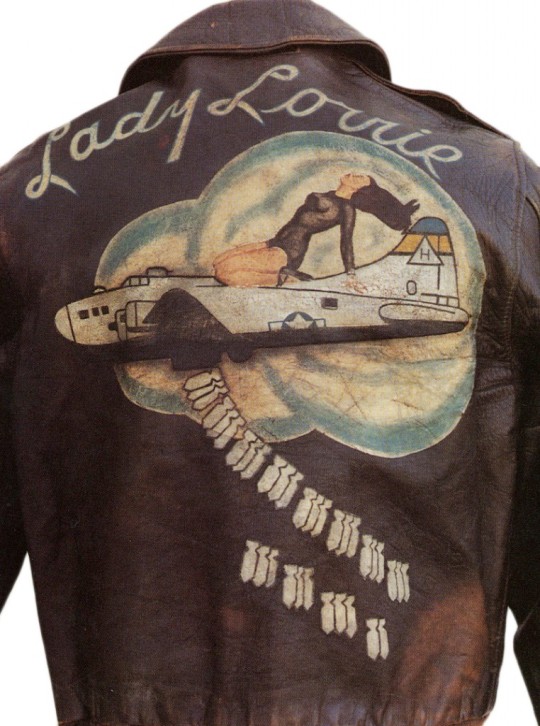
After the war was over, pilots returned home and many found joy in the speed and excitement of motorcycles. Biker clubs were formed, and thus, biker culture as well. Pilots often used their bomber jackets while riding because of the protection they offered, though the sleeves were usually removed due to how they restricted movement. Jackets got decorated with club/gang logos to represent their wearer's affiliation, much like the insignia patches. As biker clubs grew, members without a pilot history often used leather or denim jackets to showcase their affiliations. There is a LOT more to biker jacket history, but this is what's really relevant to punk jackets.
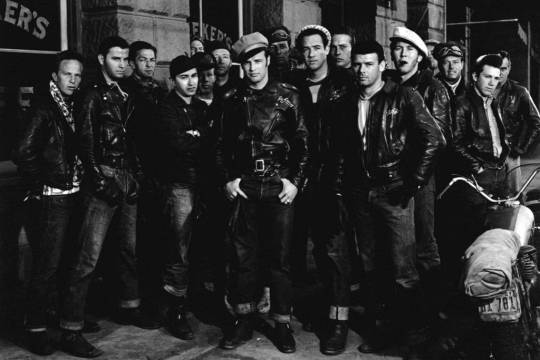
In the 60s, two different cultures evolved in the UK. The first is The Mods, known for listening to modern jazz and riding scooters (supposedly their name comes from the modern jazz thing. I would not have been surprised if it was from 'modification' considering the seeming obsession to keep adding mirrors and lights to their scooters). The other group was The Rockers who were known for listening to 50s rock and riding motorcycles. While the groups strongly disliked each other, they both decorated their jackets in ways that influenced punk's jacket scene. The Mods often added pictures, paintings, and patches to theirs, while The Rockers were more likely to be seen sporting spikes and studs. (Not to say that those things were strictly limited to each side - just what was more common)
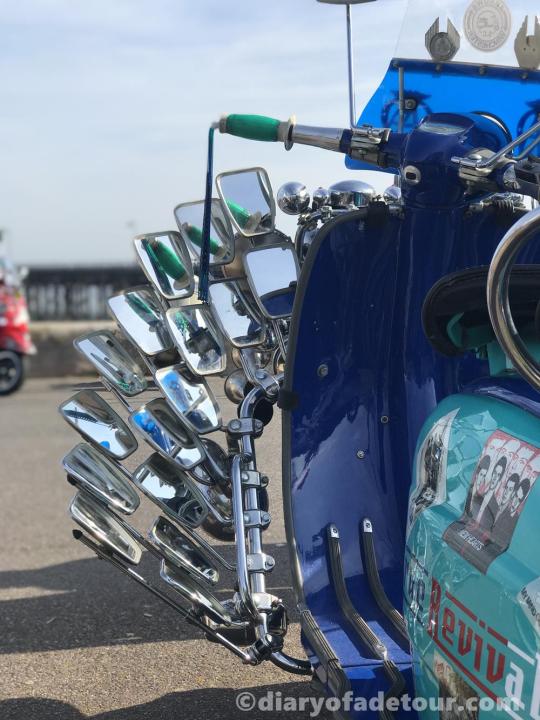
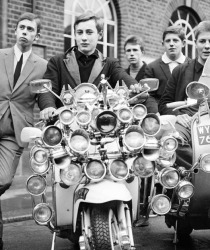
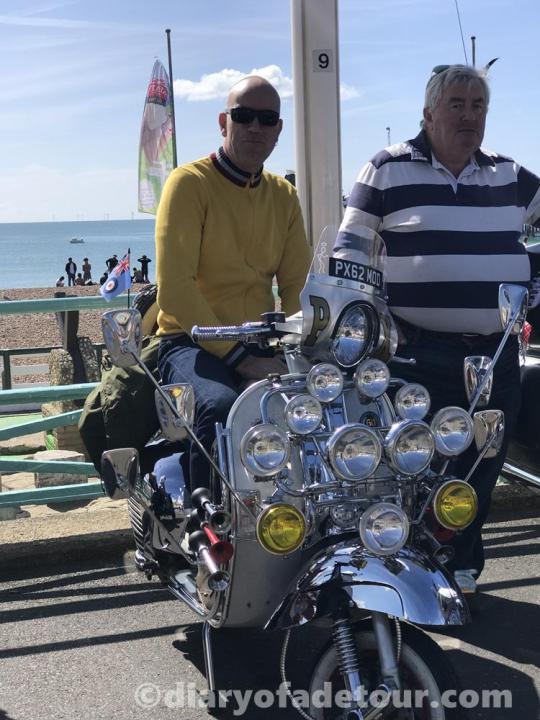

The following decade (the 70s), the two branches came together as various music subgenres collided and formed. Punk was among the genres formed, and the culture surrounding it was one of the first non-gang or club related groups to decorate their jackets. Taking influence from both The Mods and The Rockers, the characteristic punk look was formed, and intended to be a Fuck You to societal norms. In the earliest days, punk jackets were mostly covered in band patches, much like modern heavy metal jackets. As punk evolved into what we know it as today, with notes of anti-establishment and anarchy, it became more common to see political patches right along side the band ones.
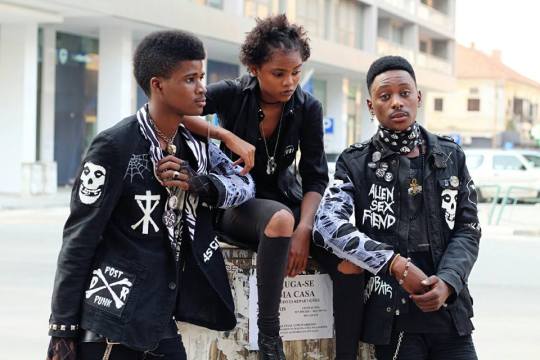

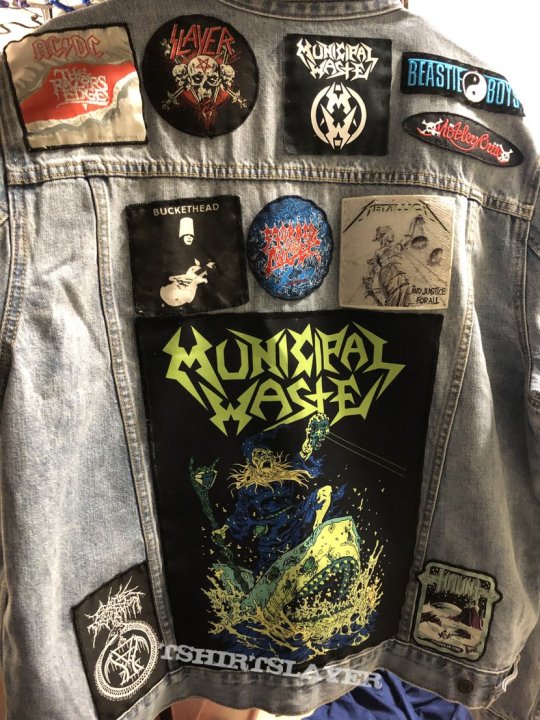
Today's jackets are a personal statement. the bands you like, your interests, political statements. They are a symbol of individuality and rebellion against society. They are a physical representation of YOU and your history with punk culture. This is why it is so important within punk culture to make your own jacket or have someone help who can customize it to you. You are not a generic human off the rack, you have lived a life, had your own battles, have your own personality, and have your own history. A premade, mass produced jacket won't showcase any of that or really truly represent the individuality of 'you'.
#punk 101#I honestly intended this to be more 'how to make' and 'things to know' but I got a little to into the history research#i'm sorry i'll do another one on that stuff#just not tonight I'm tired#battle jacket#patch jacket#punk jacket
2K notes
·
View notes
Note
you mentioned gas lamp in your tags to a poll about punk subgenres and said it was usually lumped with steampunk. i have never heard the term gas lamp. if you don’t mind talking about it would you tell me what it is and how it’s different from steampunk?
So, Gaslamp and Steampunk are sub-genre cousins.
In the simplest terms, both are generally set in a pseudo-Victorian/Edwardian time frame (though not always exclusively), but Steampunk is the sci-fi cousin, and Gaslamp is fantasy.
Steampunk themes tend to have a very heavy emphasis on science, machinery, and exploration, and draws it's aesthetic from the industrial revolution.
Gaslamp themes, while sharing a similar aesthetic and era, lean more toward magic, utilizing themes of gothic horror and the paranormal with perhaps some of the other things you'd find in steampunk as well.
So if you've read my work, that's gaslamp.
Some people mistakenly tag it as steampunk. Probably because they're more familiar with steampunk as a genre, and it's set in that sort of time frame. And while there are some steampunk-ish moments (like the mad scientist vampire obsessed with progress and revolution), it still falls very firmly into the realm of fantasy over sci-fi because the main plot revolves around magic. Hence, Gaslamp.
You'll also sometimes see people call it "gaslight fantasy," but that's less prominent. Hope that helps!
2K notes
·
View notes
Text
A Quick History of BL
As someone who wrote a thesis on this very subject a few years ago, here is the short version of how BL has evolved throughout the years. For the new comers ❤
a minute of silence for the original form of this post that tumblr decied to not save right after I saved it
I am going to go with a chronological approach. Unfortunately, I cannot put everything in one post so if there’s any questions about this or that aspect of the history of BL that you want to know and it’s not talked about here, you are welcome to ask me directly :)
Context and influences - Japan in the 60′s
Before the US forced Japan to open its borders to the outside world in the 1800s, homosexual practices were common place between budist monks, samurais and kabuki actors. During the Edo period (1600s to 1800s) there was a very rich amount of poetry, art, books (such as Nanshoku Okagami (The Great Mirror of Male Love) by Ihara Saikaku) and codes of conduct about how to have a good master/aprentice relationship, kinda like the greeks if you know what I mean. However, with the arrival of western influences, in order to become a more “civilized” country, it was all put in the closet.
Yet, in the 60′s Japan started to pick it up again through literature about young androginous beautiful boys (aka bishounen). On one hand, in 1961, the novel Koibitotachi no Mori (A Lover’s Forest) by Mari Mori was published. It tells the story of a young and beautiful 19 year old worker and a half french half japanese aristocrat, and their tragic romance. On the other hand, Taruho Inagaki wrote Shounen ai no Bigaku (The esthetics of boy-love), an essay on aesthetic eroticism (of which he wrote a lot of). All this was know as Tanbi (lit. aesthetic) literature. It generally refered to literature with implied homosexuality and homoeroticism such as works by Oscar Wilde, Jean Cocteau, etc. And of course, Mori and Inagaki.
In chinese tanbi is read as danmei (term used to refer to BL novels in china today, ie: The Untamed it’s all connected friends).
From the birth of Shonen Ai to Yaoi - 70′s to the late 80′s
Around the beginning of the 70′s, shoujo was being revolutionized by the Year 24 Group, a generation of women manga authors (mangaka) who started to explore new themes. Among them, their interest in tanbi gave birth to a new subgenre: Shounen ai.
Their most known manga were:
Kaze to Ki no Uta (The Ballad of the Wind and Trees) by Keiko Takemiya, and
Toma no Shinzo (The Heart of Thomas) by Moto Hagio
Their stories are characterized by having suffering eurpoean bishounen in boarding schools, living an idealized perfect love (meaning passionate) that, despite the tragic end of one of them, lives forever in the other.
As this genre starts getting popular, more and more fans of these stories start making their own self published manga, aka doujinshi, of the genre. It is around this time that the term Yaoi is coined. Meaning “YAma nashi, Ochi nashi, Imi nashi” (no climax, no fall, no meaning). Basically PWP fanfiction, for the most part. Doujinshis could be considered an equivalent of fanfiction in manga form. It is also here that the term Fujoshi (aka Rotten Girl, for liking rotten things) starts being used to refer to women readers of yaoi.
With this rise in popularity come the start of the commercialization of the genre. Which meant the publication of magazines dedicated solely to yaoi/shonen ai/BL. The most popular yaoi manga magazine at the time was June. The common trait of their stories being the therapeutic power of the love between the mains. The traumatized character would heal throught this newfound love.
Most of the stories at this time happened in the West (Europe or the States) as the exploration of these dark themes intertwined with homosexual romance and homoeroticism still feel safer to explore as a foreign concept. One example would be Banana Fish (1985).
Commercialization and Yaoi Ronso - 90′s
As more publishing houses pick the genre up, the term Boys Love is used to include every type of manga about homosexuality made for women.
The increasing amount of BL series sees a changes in its themes:
the start of the “gay for you” trope where one mantains their heterosexuality despite being in a homsexual relationship,
the uke/seme dynamic (mirroring hetero realtionships) also relating to physical appearence (one being more feminine, the other being more masculine),
the use of rape as an act love (sexual violence has always been present but here it becomes a staple),
anal sex as the only type of sex,
older and more masculine men start to appear
they now happen in Japan
Good examples of the presence of these themes in manga are Gravitation (1996) or Yatteranneeze (1995).
However in 1992, Masaki Sato (a gay activist/drag queen) wrote a letter in a small scale feminist magazine attacking yaoi and pointing out how it “represented a kind of misappropriation or distortion of gay life that impacted negatively upon Japanese gay men”. The female readers of yaoi responded, defending the genre as a means to escape gender roles and explore sexual themes that was never meant to represent the realities of gay men. This is know as the Yaoi Ronso (Yaoi Debates).
The debate ended with both sides understanding more of each other, with mangakas starting to include queer views in their works. It also started the academic reasearch of BL.
Yet, it is a debate that has been restarted more than once, as it is still relevant despite the evolution of the genre.
more on this on another post
Globalization and coining of BL - 2000′s
By the beginning of the 2000s BL is being sold all over the world (like all manga), and has become a stable industry. We could say it has finally become it’s own genre.
Some of the most well known manga series, to us (in the west), of the time are:
Junjou Romantica 2002
Koi Suru Boukun 2004
Love Pistols 2004
Haru wo Daiteita 1999
all of these have anime adaptations for the curious ones
We also start seeing short anime adaptations or special episodes of the most popular series, with questionable themes, such as: adoptive father x adoptive son (Papa to Kiss in the Dark 2005), father x son’s friend (Kirepapa 2008), etc...
However the themes remain more or less the same. Junjou Romantica’s love story starts with a non-con sex scene by the older one (masc, seme) to the younger one (more feminine, uke) addressed years later in the manga btw. Koi Suru Boukun’s love story is triggered by aphrodisiacs and rape. They’re still very present in the stories but slowly going away. A mangaka that represents this era could be Natsume Isaku (Candy Color Paradox 2010).
Change is slow in Japan. Even though the voices of LGBT+ people started to be taken into account in the genre it is not until later that we see it reflect in the mangas themselves. However, we can already see the start of this in Doukyusei (Classmates) (2006) by Asumiko Nakamura. Also Kinou Nani Tabeta? (2007) which is actually part of a more mature genre: Seinen.
It is my personal (subjective) theory that the BL of this era was the one that got popular outside of Japan, which is why we see lots of references to the themes, tropes and dynamics of this time in today’s BL series.
The LGBTzation of BL and the rise of webtoons - 2010′s to 2020′s
Slowly but surely LGBT characters and themes enter the scene of BL. Existing simultaneously with the previous tropes and themes, we start seeing a shift in these stories. We now see:
characters that identify as gay or some type of queer
discussions about homophobia
more mature themes about life and romance
At the same time as we get the usual love stories with the usual themes, a new trend starts to take over. And we get simultaneously, cute, sometimes questionable but light love stories:
Love Stage 2010
Ashita wa Docchi da! 2011
Kieta Hatsukoi 2019
More profound stories and darker or more complex themes:
Blue Sky Complex 2013
Saezuru Tori wa Habatakanai 2011 (mafias)
Given 2013 (suicide)
Hidamari ga Kikoeru 2013 (deafness)
And others that adress the queer experience in a more mature way (which might actually fall into the Seinen genre)
Itoshi no Nekokke 2010 (slice of life, queer characters)
Smells like Green Spirit 2011 (two ways to deal with a homphobic society)
Strange 2014 (relationships between men)
Shimanami Tasogare 2015 (an LGBT group helps a closeted gay)
Old Fashioned Cupcake 2019 (you know this one 😉)
Bokura no Micro na Shuumatsu 2020 (the end of the world)
As queer stories are explored, BL mangakas and mangakas from other genres start to consider more stories about queer people such as the Josei Genderless Danshi ni Aisaretemasu (My Androgynous Boyfriend) (2018) by Tamekou, or the Shoujo Goukon ni Itarra Onna ga Inakatta Hanashi (The story of when I went to a mixer and there were no women) (2021) by Nana Aokawa.
Still, we can see two realities live side by side. Doukyuusei gets adapted into an impactful animated movie in 2016, meanwhile Banana Fish gets an anime adaptation that keeps the homoeroticism but not the homosexuality.
For those who might be interested. Here are some of the authors that represent the first half of this era, where they start to include newer points of view:
Scarlet Beriko, HAYAKAWA Nojiko, KURAHASHI Tomo, OGERETSU Tanaka, Harada, KII Kanna (Stranger by the Sea), etc...
And authors that while keeping classical themes break the stereotypes in a subtle manner:
CTK, ZAKK, Jyanome, Cocomi, Hidebu Takahashi, SUZUMARU Minta, etc...
Mangakas also no longer stick to one genre only. They explore whichever of them they want, from BL to Seinen to others.
ie: Tamekou,
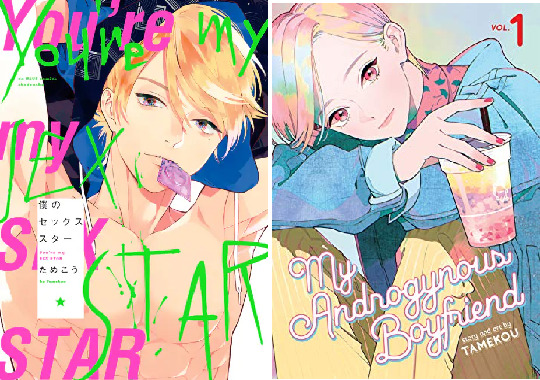
or Asumiko Nakamura

The curious case of Webtoons
With the digitalization of mangas, throught Renta and Lehzin, it has become easier (and more expensive) to access these stories. Korea makes and appearence with their webtoons. Through the lack of piracy protections and the majority of them being digital, manhwa (korean webtoons) sees a rise in popularity. Through the digital medium the influencee can be the influencer.
However, like many other East Asian countries they have consumed BL, without hearing about the conversations about BL. So they end up mantaining the older themes and stereotypes that newer BL is trying to leave behind. Therefore, we end up with a mix of old and new, ie:
Killing Stalking 2016
Cherry Blossoms After Winter 2017
Painter of The Night 2019
Additionally, it is also thanks to the easy access to internet that Omegaverse, with its higher dramatic stakes (that parallel hetero dynamics), enters the mangasphere in 2016. It has grown in popularity ever since.
With the Thai BL Boom of 2020, Japan rediscovers its own BL market and starts investing in it more. Which is why we get live action adaptations of BL manga that was popular years ago (Candy Color Paradox was a manga from 2010), the more recent ones (The End of the World With You) or new anime adaptations (Saezuru Tori wa Habatakanai in 2020).
more on this in my japanese live action BL post
What has it become now? is it BL? ML? or Seinen? Or is it all just gay manga?
It is clear that Shoujo manga (with BL, Josei and Seinen) is exploring queer themes such as gender and sexuality more and more. Japan is interested in this conversation, not only in manga (Genderless fashion). Which brings up the current question in BL studies: Does it make sense to keep these categories?
As a response to BL, ML (Male Love), which is made by gay men for gay men, started happening (around the 70s too). And Bara (gay manga porn) in response to Yaoi. However both gay men and women read BL and ML. We also see other themes being explored through BL, such as friendship (in BL Metamorphose), food (in Kinou Nani Tabeta), male relationships of all kinds (in Strange), and different queer views on life and its challenges (in Shimanami Tasogare). More and more what is LGBT and what is BL is merging, the line is blurred.
Conclusion
BL has been in my life for longer than it hasn't. It is through shoujo and BL that I have come to understand people and romance.
It is flawed, like everything else this life, but it's flourishing in many ways.
The genre feels old and new at the same time.
We can still find shounen ai/tanbi elements in more modern manga (All About J). Or the gay for you in a new light (Itoshi no Nekkoke). Or more educational manga on queer issues (My Brother’s Husband by Gengoroh Tagame). BL has around 50 years of existence but it is also being born anew in Thailand and Korea.
BL manga will continue to evolve in acordance to Japanese tastes, as it is still a local market. Hopefully the korean webtoons that get popular will be the more daring ones in their themes. Who knows where it will go from here? The only thing we know for sure is that it will continue to change. Isn't it exciting?
A post on the evolution of live action BL in Japan is coming, to complement this post. As well as a more detailed explanation of the Yaoi Debates and gay manga.
#history of bl#bl post series#I feel like I left too much stuff out#I hope it makes sense#honestly I would really recommend reading some of those manga#they're super interesting#soon it'll be 20 years since I started reading BL#my gosh#if theres anything anyone wants to know more about#I'd love to write more :)#yaoi manga#bl manga
664 notes
·
View notes
Text
ALSO. IRRELEVANT SIDEBAR. i seem to be the only person in the fandom who a) took it as a given that ‘the girl who fell through the world’ was at least a century old and thus predated the great war by at least two or three decades, and b) didn’t think the author’s identity being unknown was odd enough to require an explanation.
and i’m wondering now if the xkcd average familiarity curse Got Me bfgrbxcjk
alice’s adventures in wonderland! that book is One Hundred Fifty-Eight Years Old. it was published in november 1865. through the looking glass was published six years later in december 1871. CAN YOU NAME THE AUTHOR?
if you answered “lewis carroll,” bzzt! incorrect!
(well, correct in that the books were indeed written under that pseudonym BUT I MEAN HIS REAL NAME.)
alice’s adventures in wonderland is a hundred and fifty-eight years old. it has never been out of print. it’s been translated into a hundred seventy-four languages and it’s one of the best known works of nineteenth century english literature in the world. it’s been adapted many, many times for stage and radio and film and video games. “retelling the true story of alice in wonderland” is like an entire niche fantasy YA subgenre; i could name seven different examples off the top of my head. it’s as close to UBIQUITOUS as it’s possible for a story to be in a world with seven billion people living in it.
and… in a world where the non-pseudonymous identity of the author is thoroughly documented and easily accessible via the internet, the average person who Fondly Remembers watching the disney animated film or having the book read to them as a kid doesn’t know that ‘lewis carroll’ was a pen name.
his real name was charles dodgson.
and the reason the average person doesn’t know that isn’t any kind of individual failing or whatever, it’s just that the book was published almost a hundred and sixty years ago under a pen name. the pen name is what’s on the cover. most people don’t go Looking for biographical information about the authors of books their parents read to them as kids unless they have a particular reason to be interested. such as high octane nerdery.
(i own the 150th anniversary edition of the annotated alice and have read it cover to cover multiple times. and i’ll do it again. i am an Owns Books About The Math In Wonderland kind of nerdy about alice.)
—the point. being. the real world has a lot of things going for it in terms of historical preservation that remnant does not, chiefly the absence of a Fuck Ton of monsters trying to eat everybody all the time and making international travel and communication horrifyingly dangerous on a good day. the CCTS has only existed for a few decades; before that, sharing information between kingdoms was matter of “send an armed convoy and hope they don’t get killed and eaten by The Horrors en route.”
so the scholars of remnant are at, to put it mildly, a serious disadvantage in terms of information being retained over time.
anyway. ‘the girl who fell through the world’ is established very clearly to be remnant’s equivalent of our alice’s adventures in wonderland, in that it is a quite old children’s story that became MASSIVELY POPULAR worldwide, to the point that nearly everyone alive has at least some familiarity with the plot, many remember it as a cherished childhood bedtime story, and the more bookish characters can quote favorite passages from memory.
which is to say, it isn’t just The Story is an allusion to the wonderland story. the book’s ubiquity is also modeled after alice’s ubiquity, and the lack of popular knowledge about the author’s real identity likewise takes its cue from the fact that in real life most people Don’t Know who charles dodgson is.
so!!!
it’s not at all unreasonable to think that ‘the girl who fell through the world’ is probably meant to be about as old as alice’s adventures in wonderland—about a hundred fifty years, which would mean lewis published it around sixty years before the great war even started. (he also presumably didn’t publish it as a child; if he was about the age dodgson was when alice went to print, this would have been around twenty years after the fact.)
and it’s also not unreasonable to think that lewis, like charles dodgson, published his book under a pseudonym. or anonymously, but given how certain jaune is that alyx wrote the book, even though it was lewis taking notes and lewis saying he would write the story for jaune to find his way home…
i’d put my bet on lewis having written his book as “A.L. [Surname].” A for alyx, L for lewis, a symbolic way for her to come home with him. but the girls upon discovering the ever after is real and alyx was real would of course think “oh, ‘AL’ as in short for alyx” and the use of initials is also ambiguous enough for jaune to worry his way to the conclusion that he did, after alyx poisoned him.
fast forward a century and a half or so in a setting with no internet for most of that and hordes of man-eating Nightmare Beasts inhibiting international communication and… yeah of course the Real Name of beloved children’s classic author A.L. Whoever isn’t common knowledge outside of academic and hobbyist carrollian-equivalent circles.
#this post brought to you by me having the thought#‘but why are we surprised the book is way older than the great war. it’s aaiw.’#followed by ‘………your experiences are not universal’-ing myself GRBFJSJK#anyway. if they’re going where i think they might be going with lewis#he’s theodore’s great-grandfather#and his children were of the generation that fought in the great war#<- HIGHLY speculative but trust me it tracks.
43 notes
·
View notes
Note
27 (doesn't have to be inanimate) and 13???
13. What excites you about TF?
Honestly, it's the endless possibilities of it all. Creativity is your greatest asset when it comes to writing or even reading a transformation story in terms of envisioning how it could go. Like sure muscle growth and jock transformations are the primary interest of readers based on what I've gotten in terms of feedback from my followers, but there's endless other transformation subgenres like gender swaps (a personal favorite to write), age progression, weight gain, daddification (another recent favorite of mine), inanimate, and so much more!
Although people may not always get the kink of it all, I think that without a doubt no one can say that we're not quite creative for pondering the "what ifs" in the most unlikely scenarios.
27. If you could transform one person into anything you wanted, who would you change and into what?
This weekend was absolutely killer on my back and shoulders from doing tons of load-outs at work, so first up on the priority list would be to transform someone into a hunky personal masseuse to help take care of the tension I'm feeling because I'm SORE.

76 notes
·
View notes
Text
Bohman is a good character you guys are just mean

Yu-Gi-Oh Vrains is one of the better received spinoff series. Though, like any of the Yu-Gi-Oh spinoffs it's not without its faults. Usually I'm the first to admit the flaws in my favorite silly card game shows, even while I myself take them way too seriously. However, there's one common criticism I can't bring myself to agree with.
That is calling the main antagonist of the second season Bohman "boring" or "badly written." I've noticed fans unfairly blame Bohman for season 2's writing flaws.
Forget for a moment about whether or not you find Bohman's stoic attitude interesting or likable. If you look at characters not as people, but as narrative tools the author uses to say something about the story's themes then Bohman has a lot to say about VRAINS cyberpunk themes.
Cyberpunk is a subgenre of science fiction that tends to focus on "low-life and high-tech." As I like to put it, in Cyberpunk settings technology has greatly advanced while society itself lags behind unable to keep pace with the rate at which technology changes. Yu Gi Oh 5Ds is an example of a cyberpunk dystopia because despite having what is essentially access to free energy, and living in a society with highly advanced technology resources are hoarded by the wealthy and an unnecessary social class divide still exists.
In other words technology changes quickly while humans tend to remain the same.
The central conflict for all three seasons of Vrains are actually based on this very cyberpunk notion. That technology changes, updates, and becomes obsolete at a rate too fast for humans to ever adapt to. For Vrains, the conflict is whether humans can ever coexist with an artificial intelligence they created that can grow and change faster than they can keep up with.
This is well-tread ground in science fiction. The idea itself most likely emerged from I,robot. A science fiction book that is a collection of dirty stories that details a fictional history showing robots growing slowly advanced over time. The framing device is that a journalist is interviewing a "robopsychologist" an expert in the field of analyzing how robots think in their positronic brains.
One of the major themes of the book is despite the fact that robots are 1 - intelligent and 2 - designed by humans, they don't think the same way humans do. Hence why a robopsychologist is needed in the first place. One of the short stories is the first appearance of Asimov's three laws of robotics.
The First Law: A robot may not injure a human being or, through inaction, allow a human being to come to harm.
The Second Law: A robot must obey the orders given it by human beings except where such orders would conflict with the First Law.
The Third Law: A robot must protect its own existence as long as such protection does not conflict with the First or Second Law.
This is just one example. A robot no matter how intelligent it is will be required to think in terms of these three laws, because robots aren't biological, they're programmed to think in pre-determined patterns.
Of course clever enough artificial intelligences are capable of finding loopholes that get around the three laws, but even then they're still forced to think of every action in terms of the three laws.
Robots and humans are both intelligent, but if AI ever becomes self aware it will 1) be able to process information better than any other human can and 2) think differently from humans on a fundamental.
Vrains is themed more than anything else around "robo psychology" or trying to understand the ways in how the Ignis think and how that's different from it's human characters.
Robo-Psychology is actually a common reocurring theme. "DO ANDROIDS DREAM OF ELECTRIC SHEEP?" fearless artificial humans known as Replicants who need an empathy test known as the voight kampff test to distinguish them from human beings.
There are other Cyberpunk elements in Vrains. There's a big virtual world where everyone can appear as custom designed avatars, that's taken from Snow Crash or of the most famous and genre defining cyberpunk novels. There's a big rich mega conglomerate that's being opposed by a group of hackers.
However, the central question is whether humans and AI can coexist in spite of the fact that AI are much smarter and evolve faster than us.
Revolver's father believes the Ignis must be destroyed in order to avoid a possible technological singularity in the future.
The technological singularity—or simply the singularity[1]—is a future point in time at which technological growth becomes uncontrollable. According to the most popular version of the singularity hypothesis an upgradable artificial intelligence will eventually enter a positive feedback loop of self-improvement cycles, each new and more intelligent generation appearing more and more rapidly, causing a rapid increase ("explosion") in intelligence that surpasses anything humans can make.
Basically your computer is smarter than you, but your computer isn't self aware. It needs you to tell it what to do. Artificial intelligence already exists but it's programmed by humans, it doesn't program itself. The technological singularity proposes that eventually a self aware ai, will be able to program itself and improve upon it's own programming- therefore ridding itself of the need of it's human programmers.
This is what leads us to Bohman, an AI designed by another AI.
THE THIRD LAW
Before digging into Bohman let's take a minute to discuss his creator. Lightning was one of the six Ignis, created by Dr. Kogami through the Hanoi Project.
The Hanoi project involved forcing six children to duel in a virtual arena repeatedly, and using the data collected from that experiment to improve the AI they were working on, creating what became known as the Ignis. However, after Dr. Kogami ran several simulations and found that the Ignis would one day be a threat to the humans that created them Hakase decided instead to try destroying the Ignis before that future ever came to pass.
We later learn that this isn't the complete story.

Kogami and Lightning both ran simulations of the future when the Ignis were in their infancy. Kogami's simulations showed him the Ignis would inevitably go to war with humans. Lighting however, ran more in-depth simulations and found that he was the one that was corrupting the data set. If you ran simulations of the five ignis without him, then the projected futures were all in the green, but any simulation with Lightning counted as a part of the group projected a negative future for both humans and AI.
Which means that if Kogami knew that the bug in the program was Lightning, he'd likely respond by just getting rid of Lighting and letting the rest of the Ignis live on as originally intended.
This is where the third law comes into play - a robot must protect its own existence as long as it does not interfere with the first and second law.
Now, I don't think Kogami used the three laws exactly, but artificial intelligences are programmed in certain ways, and Lightning was likely programmed to preserve itself.
Even a human in Lighting's situation would be driven to act as they did. Imagine you're in a group of six people, and you fid out that YOU'RE THE PROBLEM. That if they removed you, everything else would be fine. Wouldn't you be afraid of your creator turning against you? Of your friends turning against you and nobody taking your side?
Lightning is a bit of a self-fulfilling prophecy. Ai asks him at one point why he went so far as to destroy their safe-haven, lie and said the humans did it and pick a fight with the humans himself, something that might have been avoided if they'd just stayed in hiding. It seems that Lightning is just defective as his creator declared him, but you have to remember he's an AI programmed to think in absolutes. AI, the most humanlike and spontaneous of the AIs ends up making nearly the exact same choices as Lightning when looking at his simulations later on - because they're character foils. As different as they may seem they still think differently from humans.


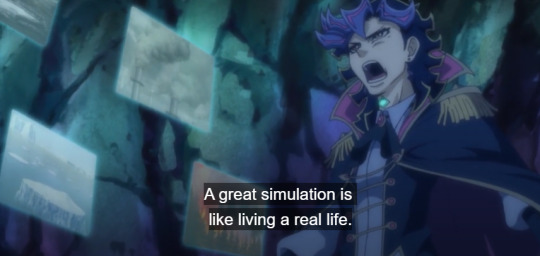
When Ai explains why he made his decisions based around lighting's simulation, he tells Playmaker that he can't dismiss or ignore the simulation or hope for the best the way Playmaker can because he is data, he thinks in simulations and processes.

AI even admits to feeling the same feelings of self-preservation that Lightning did.
While Lightning may seem selfish, he's selfish in the fact that he's thinking of his own survival above all else. He's afraid of 1) his creators turning against him, and 2) his fellow Ignis turning against him.
To solve the first he decides to make a plan to wipe out his creators. To solve the second, he needs every ignis on his side when he goes to war. The first thing he does is destroy their safe haven and frame the humans for it so the Ignis are more inclined to take his side. He's so afraid of his fellow ignis turning against him he even completely reprograms one of them - a step he doesn't take with the others, he just imprisons Aqua. He probably thought having one more ally would make it more likely for the others to pick his side.
Every step he takes is a roundabout way of ensuring his survival and the other ignis- eve when he actually goes to war with the other ignis he intended on letting them survive. Though his definition of survival (fusing with Bohman) was different than theirs.
So Lightning seems to be working out of an inferiority complex, but what he's really afraid of is that his inferiority makes him expendable.
At that point you have to wonder, what does death mean exactly to a being who is otherwise immortal? Ignis won't die of age, they'll only die if they're captured and have their data stripped apart or corrupted. Kogami made an immortal being afraid to die.
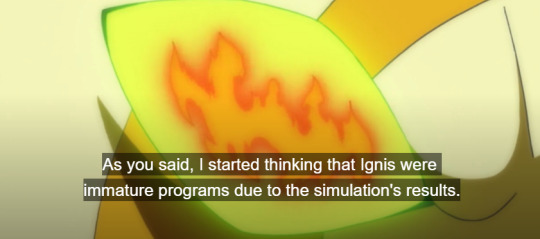
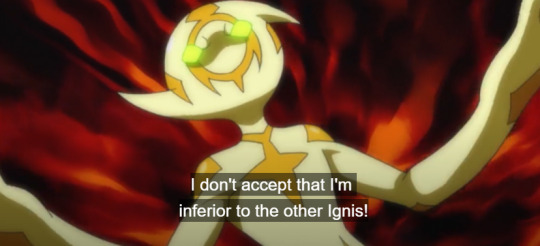

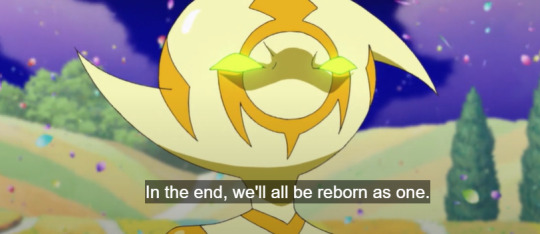
Some part of me thinks though that even after taking all these steps to preserve themselves, the simulations were so convincing that Lighting accepted their death as inevitable. Which is why they made Bohman, to find some way for them to keep on living afterwards.
After all AI are data, ad having their data saved in Bohman is still a form of living by Lightning's definition.
Ghost in The Shell
Bohman is the singularity. He's an AI designed by another AI to improve upon itself. Unlike the rest of the Ignis who were copied off of traumatized chidlren, Lightning basically made him from scratch.
Ghost in the Sell is a famous anime cyberpunk movie directed by Mamoru Oshii. The title comes from "Ghost in the Machine" a term originally used to describe and critique the mind existing alongside and separate from the body. Whereas in the movie the "Ghost" is the huma consciousness, while the "shell" is a cybernetic body.
The protagonist of Ghost in the Shell is Major Motoko Kusanagi, a human that is 99% cyborg at this point, a human brain residing in a completely mechanical body. The movie opens up with a hacker namd PUppet Master who is capable of "ghost-hacking" which is a form of hacking that completely modifies the victim's memories utterly convincing them of their false memories.
There's a famous scene in the movie where a man tells the police about his wife and daughter, only to be told that he's a bachelor who lives alone and he's never had a wife and daughter. Even after the truth is revealed to him, the fake memories are still there in his brain along with the correct ones. Technology is so advanced at this point that digital memories (hacked memories) are able to be manipulated, and seem more real than an analog reality.
Anyway, guess what happens to Bohman twice?
Bohman gets his memories completely rewritten twice. The first time he believes he's a person looking for his lost memories, the second time he thinks he's the real playmaker ripped out of his body, and playmaker is the copy. He's utterly convinced of these realities both time, because Bohman is entirely digital - and simulations are reality, and so simulated memories are just the same as real memories.
I think part of the reason that people find Bohman boring is because he's a little strange conceptually to wrap your head around, as an AI produced AI he's the farthest from behind human. If you use the ghost in the shell example I just gave you though - imagine being utterly convinced that you had a loving wife and daughter only to find out in a police interrogation room you're a single man living in a shitty apartment. imagine after the fact you still remember that they are real, even though you know they're not.
That's the weird space Bohman exists in for most of Season 2 when he's searching for himself. He's an AI designed by an AI so he can be rewritten at any time according to Lightning's whim until Lighting decides he's done cooking.
The Ignis at least interacted with the real world because they were copy pasted from traumatized children, but all Bohman is is data. So, why would he see absorbing human memories into himself and converting them into data as killing them? He is data after all, and he is alive. He has gone through the process of having his own memories rewritten multiple times, and he's fine with it b/c he's data.
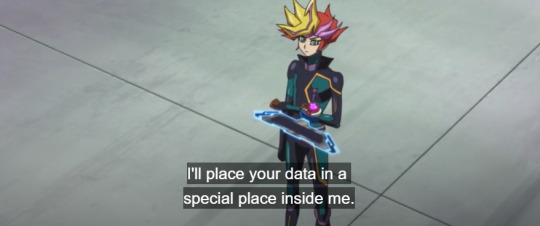

Nothing for Bohman is real, everything is programmed so of course he thinks saving other people as data is just fine. He even offers to do the same thing to Playmaker that was done to him.
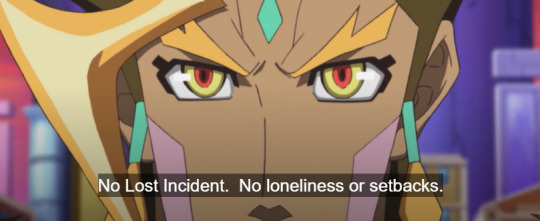


If Lightning is following the path of self-preservation however, Bohman is following his program to preserve everything in the world by merging with it.
His ideas also follow the idea of transhumanism: the theory that science and technology can help human beings develop beyod what is physically and mentally possible. That technology exists to blur the boundaries of humanity, and what humans are capable of.
Ghost in the Shell isn't just a work of cyberpunk, it's a transhumanist piece. Motoko Kusanagi is a character who has had so many of her human parts replaced with mechanical ones she even posits at one point it's possible for her to simply have been an android that was tricked into thinking it was human with false memories just like Bohman, and she has no real way of knowing for sure. The only biological part of her his her brain after all in a cold mechanical shell.
Bato, who represents the humanist perspective in this movie basically tells Motoko in that scenario it wouldn't matter if she was a machine. If everyone still treats her as human then what's the difference? His views are probably the closest to the humanist views that Playmaker represents in VRAINS.
Motoko Kusanagi meets her complete and total opposite, a ghost in the machine so to speak. The Puppet Master turns out to be an artificial intelligence that has become completely self-aware and is currently living in the network.
The Puppet Master much like Lightning, and later Bohman is gripping with the philosophical conundrum of mortality. In the final scene of the movie, The Puppet Master who wants to be more like all other biological matter on earth asks Motoko to fuse with him, so the two of them can reproduce and create something entirely new. The Puppet Master likens this to the way that biological beings reproduce.
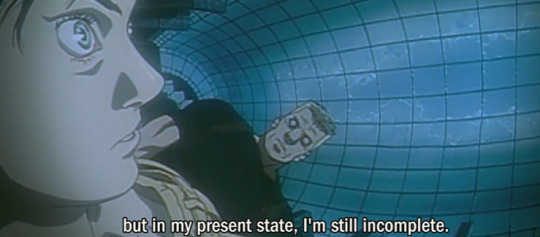



Bohman like The Puppetmaster thinks that merging will fix something that's incomplete inside of him because he's so disconnected from all the biological processes of life. Bohman doesn't have anything except for which Lightning already prepared for him or programmed into him. I mean imagine being a being that can have his memories reprogrammed on the net, that in itself is existentially horrifying. It's only natural he wouldn't feel connected to anything.
Motoko accepts the Puppetmaster's proposal. Playmaker rejects Bohman's proposal. I don't think there's a right answer here, because it's speculative fiction, it's a "What if?" for two different paths people can take in the future.
However, in Bohman's case I don't think he was truly doing what he wanted. Puppet Master became self aware and sought his own answers by breaking free from his programming. Bohman thought he was superior to the Ignis, but in the end he was just following what Lightning programmed him to do. He'd had his identity programmed and reprogrammed so many times, he didn't think of what he wanted until he was on the brink of defeat by playmaker and then it was too late.
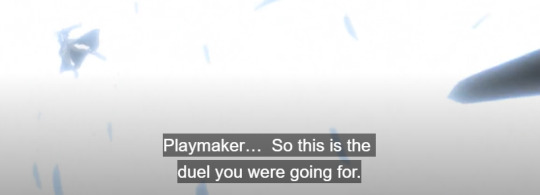

When Playmaker defeats him all he thinks about is time spent together with Haru, with the two of them as individuals. Something he can no longer do anymore now that he's absorbed Haru as data, and something that he misses.
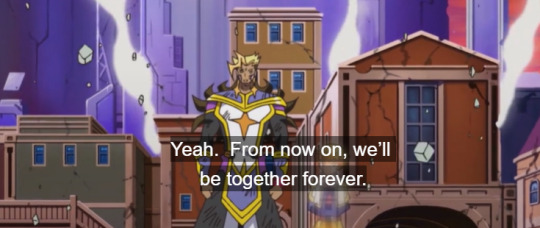
He's not even all that sad or horrified at the prospect of death as Lightning was, and he even finds solace in the thought of going to oblivion with Haru, because if he were to keep living it'd be without Haru. In other words the one genuine bond he made with someone else by spending time with them as an individual was more important than his objective of fusing with all of humanity - which he believed was also bonding with them.
This is really important too, because it sets up the Yusaku's rejection of fusing with Ai. Yusaku's reasoning has already been demonstrated to be the case with Bohman and Haru. Bohman was perfectly happy being two individuals, as long as he had a bond with his brother. When he ascended into a higher being he lost that. Ai and Yusaku might solve loneliness in a way by merging together into a higher being, they might even last forever that way, but they'd lose something too.


Once again the problem with AIs is that they think in absolutes. That's important to understanding Lightning, Bohman and even Ai's later actions. Lightning can't stand any percentage chance that he might die, so he kills the professor, destroys the ignis homeworld, pulls the trigger to start humanity himself, he even reprograms his own allies all to give himself some sense of control.
Bohman's entire existence is outside of his control. He's rewritten twice onscreen, probably more than that, and he thinks merging with humanity is the thing that will give him that control - by ascending into a higher being than humanity. However, the temporary bond Bohman had with his brother Haru, was actually what he valued the most all along. Moreso than the idea of fusing with humanity forever.
Even Motoko making the choice to go with the transhumanist option is something that's not portrayed as 100% the right choice. Ghost in the Shell has a sequel that portrays the depression and isolation of Bato, the Major's closest friend and attachment to her humanity after she made the decision to fuse together with Puppet Master. In that case, just like Playmaker said to Ai, even if she ascended to a higher form, and even if she might last forever now on the network, something precious was lost. Motoko may exist somewhere on the netowrk but for Batoto his friend is gone.
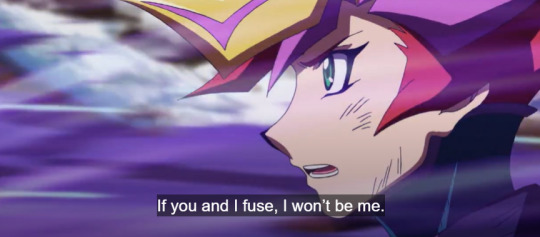
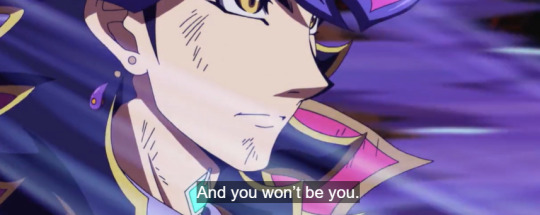
Ai exhibits the same flaw as the previous two, he ca only think in absolutes, he can't stand even a 1% chance that Playmaker might choose to sacrifice himself for Ai and die, so he decides to take the choice entirely out of Playmaker's hands. However, no matter what Ai would have lost Playmaker one day, because all bonds are temporary. It's just Ai wanted to have that sense of control, so he chose to self-destruct and take that agency and free choice away from Playmaker.
It's a tragedy that repeats three times. Ai too just like Bohman, spends his last moments thinking about what was most precious to him was the bond he formed with playmaker, as temporary as it was. A tragedy that arises from the inability of the Ais to break away from the way they're programmed to think in simulations and data, even when they're shown to be capable of forming bonds based on empathy with others.
All three of them add something to the themes of artificial intelligence, and transhumanism that are in play at Vrains and none of them are boring because they all contribute to the whole.
Which is why everyone needs to stop being mean to Bohman right now, or else I'm going to make an even longer essay post defending him.
35 notes
·
View notes
Note
17! but also using the opportunity of the ask game to get to know more about the effortless worldbuilding in sff :)
from the end-of-year book ask
17: Did any books surprise you with how good they were?
I think Three Body Problem is the only one meeting this condition this year so I'll have no trouble staying on topic :> but I'm gonna specifically talk about "hard" SF as I conceive of it—I haven't read any analysis so this may just be a jumble of improvised thoughts.
SF, being "speculative" fiction, of course has to take on the problem of speculating and of presenting things that don't (and perhaps cannot) happen. On average this is accomplished thru a healthy combination of scientific grounding and good-natured handwaving: I drop a few sentences about "quantum entanglement" and you go along with my ansible, or you tell me about "positronic circuits" and I agree that you can make a brain with them. This is the compact that makes SF work because you fundamentally cannot expect speculation without, well, ceding ground on reality.
But at least a subset of SF readers are of the kind to really want to grok how it is that this or that scientific feature of the world works or may come about. Every contraption and novel technology is like a puzzle to be riddled out. This is the place where speculation becomes sincere mechanical prediction, and it's why I love hard SF.
This subset of readers can be matched to a subgenre of writers who commit fully to filling in as many blanks in their technological, biological, etc. speculation as possible. The rows of astronomical data can't be left vague—tell me what frequency of light we're dealing with here—xenobiology isn't taken for granted—what is the neurology of your aliens??—and so on. The dots are connected, the rest of the owl is drawn for real, the image is made crisp. Like fireworks for the reader's brain.
When this kind of worldbuilding is executed well imo it looks effortless. Looks, not is, because behind every explanation of near-c travel is hours of research into at least special relativity and time dilation, along with calculations by-hand. Behind every account of an exoplanet's atmosphere is probably a few papers perused on the subject and several articles on scientific american. Peter Watts, in the note at the end of Blindsight, includes a fucking bibliography of a hundred or so references as well as thank-yous to many an academic he split handles of liquor with. And this is only the visible fragment of what has to be a library of knowledge accumulated both passively and actively to make a speculated world feel as concretely plausible as possible.
None of this is necessary for good SF. The aforementioned compact means any author can opt out of this commitment at any time. But it's what it takes to make tightly-written hard SF, where your conceptual hands are kept diligently at your side, waving an idea through maybe once every five chapters when you have no other choice.
So anyway, Three Body Problem is a tour de force in doing this and doing it cleanly. It uses a storytelling device a lot of hard SF employs to make it work: rather than stuffing dense exposition into narration (at which point, just read the source papers) it deploys a cast of characters who more than anything else, really know their shit. We get exposition trickle-fed through experts who are trying, along with us, to make sense of their novel environments and unfamiliar technologies using their knowledge of the present limits of human understanding. This is what Watts does in Blindsight too, by the way: a claustrophobic ship crewed by technical specialists makes first contact, so everyone has something encyclopedic to say about everything and it's only natural.
What astounded me about Cixin Liu's writing is that he made it work just when I least thought he would be able to. I was sure I was being shown things completely inexplicable and necessarily supernatural until he went and explained them in plain terms; better yet, he explained them in ways that made so much sense in retrospect that I was kicking myself for not seeing the answer. This has exactly the flavour of a good puzzle.
The trade-off hard SF makes is that you are often limited in the metaphorical/thematic work you can do through your speculation. I think the contrast between "calendrical science" in Yoon Ha Lee's Machineries of Empire series and Asimov's "psychohistory" illustrates this well.
Yoon Ha Lee has mathematical training, and calendrical science is a speculative field consisting of theorems, conjectures, proofs, etc. in the language of mathematics that stand in for cultural hegemony and power projection. This makes for a great operationalization of soft power: space is filled and distorted by the quantifiable effects of whatever regime is dominant there (the "calendar" here being synecdoche for culture writ large). But obviously he can't fill in the blanks of how a calendar causes spacetime distortions that specifically make one side's weapons more effective, or provide certain formations with shielding effects. This is, I guess, semi-hard (lol) SF—you can see how it's supposed to work, but it's clear that it just won't. What you get in return is pretty politically interesting storytelling.
Psychohistory is the converse: a deterministic-enough lovechild of economics and sociology explained in the Foundation series as using all the familiar methods of linear algebra and differential equations together with unfamiliar innovations of just how to quantify human behaviour in order to make reliable predictions. There are entire chapters dedicated to explaining the conceptual nuance that went into developing psychohistory ("the hand on thigh principle" from prelude to foundation is just about how the theory resolves divergence by reducing insignificant terms to zero) and an entire book to exploring one of its limitations. It's fascinating to read. But you also get little narrative depth out of it, because hard SF, even when done well, is not guaranteed to make a story thematically interesting or politically compelling. This is the Three Body Problem problem too: its political commitments are threadbare and unserious because that's just not what it's about. I couldn't recommend it on those terms, but that's not what I like so much about it. I will say the conceptualization goes a little off the rails in the final chapters, but I think most SF authors were in some kind of string theory inspired fugue state at the time.
What I would love to see (and I'm sure exists) is hard SF that also has interesting politics. Unfortunately that's an intersection of two already-narrow intersections.
ty for ask✨🐐
#ask answer#idk if that's what u were asking about but. well.#got some sleepy thoughts out#also this is not to say that there isn't tons of research in “soft” SF#it's just that it would be a different kind of research and a different library of knowledge
70 notes
·
View notes
Text
I really did not want to put my two cents into this but i'm so tired at this point. I hate dropping into discourses and debates, basically avoided it like plague but this one is just.. ticks me off so bad.
So if anyone is interested what my opinion on the "Sleep Token, metal or not?" stupidity, by all means read on. I just had to get this out so bad.
I hate the "is ST metal or not" discourse so much. It's stupid and irrelevant. It is metal. It's not some magical thing that defies every genre it touches.
Those metal elitists who say it isn't metal are either don't know the genre they are so adamantly try to "keep pure" or think metal only consists of metalcore, numetal or deathcore, because that's all they listen to. Metal isn't just Slipknot, Lorna Shore and Slaughter to Prevail.
Metal isn't just screams and bleghs and arf arfs. If we say that then what the fuck genre is fucking symphonic metal supposed to be for example? Or folk metal? Or heavy metal bands? Or any power metal band?
Ffs people.. Metal is a blanket term that has subgenres. Which were always varied and not all of them has screaming and growling as an essential part.
Do ST has straight up pop songs? Yes. Does ST have jazz, djent, rock, rnb, sometimes trap and whatever else the fuck you wanna name elements? Yes, of course. Genre mixing is their thing, we established that. But also do at least half the ST songs have harder riffs and in general heavier instrumentals than half the mainstream metalcore bands? Also yes.
Just because the singing isn't your "traditional metal singing" it doesn't mean it's not metal. Take Nightwish for example. When they started opera singing over metal music, it very much was not the "standard metal singing". Were they metal regardless? Yes.
Come on guys.. ST is not a unicorn in a field of horses. It's metal. You don't have to put a subgenre on it if you don't want to, or don't know which one would be appropriate. But it is metal and metal it's gonna stay no matter how hard anyone tries to state otherwise.
PS.: SORRY FOR THE EXCESSIVE SWEARING
#i can already feel the hate mail coming towards me for this but fuck it i said what i said#sleep token
56 notes
·
View notes
Note
Has anyone suggested Desmond as the same species as red XIII from FF7 for the Desmond as an animal/creature subgenre yet
Of course, Desmond gets to be called Red XVII.
Okay, but in all seriousness, considering Red XIII’s real name Nanaki, if Desmond is ever going to get a different name for this one, it would probably be Jyuna or Hina as a reference to Subject 17 (Jyu = 10/ Hi = 1, Na = nana = 7)
For this one, I’m guessing he’s still in AC world? (although it would be fun to play with the idea that he’s one of the small children running with Red XIII in the og ending)
He’d probably be thought of as some kind of exotic feline creature until they see the flames on the end of his tail.
From there, he’d be considered some kind of mythical creature of some kind, maybe he even becomes an example of how shisa truly do exist?
In terms of appearance, I like to think he looks a lot like Red XIII with a scar on the right side of his lips and having darker red fur on his right front leg. He also has the same tattoo on his left front leg and maybe mane decorations very similar to Ratonhnhaké:ton’s?
Both of his front legs are armed with hidden blades that act more like a hidden spur that he can use to attack. The flame of his tail is also the color of the sun.
Wherever he ends up in, he’d most definitely be considered more on the side of a dangerous feline.
But you know the best part?
He can talk.
Which means he can actually converse with his ancestor.
This opens the floodgates because this means he will have an easier time to change history.
… if he wanted to.
…
It’s Desmond.
Of course, he’d want to change his ancestors’ fate at the very least.
#it seems today is simply#let’s make desmond feline creatures day XD#desmond is turned into a creature subgenre#assassin's creed#ask and answer#desmond miles#teecup writes/has a plot#fic idea: assassin's creed
53 notes
·
View notes
Text
It's time to start thinking about this year's Inkling's Challenge. There are a few things to address before I make anything official, and I'd like to bounce it off of you guys first.
Interest
Is anyone interested in doing this?
Themes
As in previous years, I'd like to have a list of seven Christian themes for writers to choose from to inspire their stories. This encourages people to think about the Christian element, and provides some guidance without being too rigid. I got the impression that last year's images worked better for people than the previous year's list of Christian concepts. I'm trying to figure out which direction to take with this year's list.
Options include:
Keeping last year's imagery list. Makes it easy for me, but I would like to shake things up to give each year's Challenge a unique feel.
Coming up with a list of new images. My first thought is images that have been applied to God (shepherd, father, king, bridegroom, servant, etc), though that may be too narrow and limit people to stories involving blatant Christ figures. At the moment, I can't think of anything else that goes beyond the major Christian images in last year's list.
Coming up with a new list of more abstract Christian themes. Virtues? Gifts of the Spirit? Books or Sections of the Bible?
I'm open to any ideas that anyone might have because I'm stumped.
Team Chesterton's Technology Category
Each team in the Inklings Challenge gets a fantasy and science fiction genre assigned to it. The split has been pretty even with stories written for Team Lewis and Team Tolkien, but after two years, we've yet to have a single story written for the Technology genre of Team Chesterton. This suggests there's a major problem with the concept, so I should probably switch it up.
The best solution depends on what exactly the problem is. Is the category too broad? Does the title make it seem too technical--like you have to be an expert in technology and write about it realistically? Does it not have a genre attached to it that inspires stories? "Space travel" and "time travel" both suggest going places, which naturally sparks stories. And they evoke certain not-necessarily-hard-sci-fi genres.
There is a possibility that it's chance--maybe Intrusive Fantasy, with its urban fantasy and fairy tale possibilities, is just too appealing to this crowd in comparison to any sci fi genre. But to have no stories in the genre (with Team Chesterton always sparking the fewest stories) suggests a deeper problem.
How to fix it?
Options include:
Choose a category name related to travel like the other two are. There are lots of stories you could tell based on air, land, and sea travel that still involve sci-fi technology (and the concept matches things included in Chesterton's work). But what to call it? "Earth-based travel"?
Choose a certain type of technology to focus on. Say, Biological Technology. Or Robots. This may have some of the same too-technical-sounding problems of the Technology category.
Choose a technology-related subgenre, like Cyberpunk or Steampunk. (Or all the -punks if I could figure out a decent term for it). This still fits Chesterton's work, but may be too limiting or may still not draw writers--after all, these were always options under the original genre category, and no one wrote any.
Any feedback in this area would help.
103 notes
·
View notes
Text
Year-End Poll #58: 2007

[Image description: a collage of photos of the 10 musicians and musical groups featured in this poll. In order from left to right, top to bottom: Beyoncé, Rihanna, Gwen Stefani, Fergie, T-Pain, Carrie Underwood, Plain White T's, Akon, Nelly Furtado, Fergie. End description]
More information about this blog here
This poll highlights some interesting changes in the direction pop music was heading. By this point, it was clear that pop music was shifting towards a more electronic sound and specifically club music. Buy U a Drank by T-Pain is especially notable for this. Most obviously, T-Pain was one of the most successful adopters of Auto-Tune as a stylistic choice. I touched on the plugin briefly when discussing Cher's Believe, but with both that sound and most of T-Pain's discography, the vocal effect was used to give off a futuristic, almost robotic quality to the voice. But that didn't stop Auto-Tune (and T-Pain specifically) from being used as a punching bag for "untalented singing". In case it needs to be said, the exaggerated use of Auto-Tune on these songs were a stylistic choice. If you're using Auto-Tune to fix a bad vocal performance and it sounds like that, someone messed up. (Also T-Pain actually is a very talented vocalist).
I'm also bringing up this song for how it represents a subgenre of southern hip-hop that would become forever associated with the decade: snap music. While it has its stylistic origins in crunk, snap was recognizable for its simpler production and more laid-back sound. Popular snap songs from the time include Laffy Taffy, Crank That (Soulja Boy), and It's Goin' Down. While not on this poll, Crank That (Soulja Boy) is relevant for being one of the first examples of a song taking off online (as in, someone made the song and posted it online themselves). The song was first posted to SoundClick before expanding to a wider audience on MySpace.
This subgenre is more commonly remembered as "ringtone rap", for how this sound really worked with the audio processing technology capable of cellphones at the time. Like "bubblegum pop" in the past and "mumble rap" in the future, the term "ringtone rap" was often used in a derogatory sense.
But the simpler production techniques found on these tracks is also emblematic of how music production was starting to become much more accessible. Crank That (Soulja Boy) was created using a demo version of FL Studio, and the drum loop for Rihanna's Umbrella comes from Apple's GarageBand (specifically Vintage Funk Kit 03). Technology was allowing people to have easier access to both music production and audiences.
Also, this was the year this site was founded. Yay.
#billboard poll#billboard music#tumblr poll#music poll#2007#2000s#2000s music#beyonce#rihanna#jay z#gwen stefani#akon#t-pain#yung joc#carrie underwood#plain white t's#snoop dogg#nelly furtado#ludacris#fergie
117 notes
·
View notes
Text
Alright, I feel like discussions of mascot horror are getting a little too broad. People are throwing around the term with things that it does not apply to, so I'd like to propose a new horror subgenre: Catalogue Horror.
Mascot horror revolves around a wide cast of monster characters that are either meant to appeal to children on purpose, or which are a bait-and-switch of a cute character that turns out to be evil. Catalogue horror, in contrast, still revolves around a cast of monster characters, but these characters are not themed around appealing to children. The information on the monsters will often read more as encyclopedia entries than character bios. That's not to say catalogue horror can't be popular with children, but I think there needs to be a distinct line between properties that are marketing themselves to a child audience specifically to turn a profit (Poppy, modern FNAF, etc), and legitimate children's/all-ages horror.
Examples of catalogue horror would include: SCP, Spooky's Jumpscare Mansion, the Backrooms, and Doors. Doors in particular gets lumped in unfairly with the mascot horror crowd because it's kid-friendly, but imo absolutely lacks any of the staples of mascot horror. A lot of analog horror would also end up falling into the catalogue horror category as well, as many of them are rundowns of a world's lore, including its dangerous creatures and objects. A lot of collaborative horror falls into the catalogue horror category (Backrooms, SCP) as this format is a very good way to get everyone's OCs into the same setting. Catalogue horror is not new, but seems to be getting more popular as of late, so I think a label for this sort of horror would be useful. What do you guys think? Do you have any other examples that fit this description?
(Also @calpalsworld and I came up with this concept together so credit where it's due.)
21 notes
·
View notes
Text
The Subcategories of Fantasy

As an author who loves Fantasy, I wanted to help my fellow writers understand all of the different elements that fantasy can fall under, ranging from the well-known to the specific. I figured that doing so could help other writers like myself understand exactly what sort of story they’re writing, and how these stories differ from one another. I’ll also be giving examples of these types of stories, as well as my own thoughts on the different genres at the end.
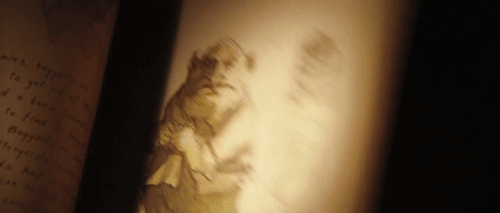
What is Fantasy?
Fantasy in its simplest term, is any form of media that diverges from the mundane reality of our ordinary everyday world in one facet or another. A story does not need to have magic, or dragons, or princesses to be called a fantasy story. While those are common motifs, in truth, all it takes to be considered fantasy is to not adhere to the real world in one form or another. Good Omens is a fantasy story, despite having no dragons or princesses anywhere. A Song of Ice and Fire has dragons and princesses, but magic is scarce and seldom ever seen. The Song of the Sea has a lot of magic, but a lot fewer dragons.

MEDIEVAL FANTASY
The story takes place in a fantastical world of the author’s design with a medieval or renaissance inspired setting, world view, and/or political structure. Renaissance Fantasy doesn’t really tend to exist on its own, so any setting with Renaissance aspects tends to just get lumped in with Medieval Fantasy. I don’t even really need to explain this one to you. It’s the most common subgenre of fantasy. A medieval fantasy does not have to be set in the real medieval period of Earth’s history, but rather, a medieval fantasy is any story set in a fantastical world that makes use of a medieval-based society as its setting.

HISTORICAL FANTASY
This is a story in which fantastical elements are included in real world historical settings. This is any historical setting where there’s a King of England but also a dragon or trolls to deal with. There’s almost this sort of unspoken rule that any story set in Ancient Greece will inevitably be Historical Fantasy. Arthurian Fantasy, Mythology Fantasy, and Fable Fantasy could all be considered subcategories of Historical Fantasy, since most instances of these genres would be classified as Historical Fantasy, though there are exceptions. As an example, Once Upon a Time and the Fables comics series are both Fable Fantasies, but are not Historical Fantasy. Likewise, Rick Riordian’s Percy Jackson-verse is clearly Mythology Fantasy, but is not Historical Fantasy. Classic examples of Historical Fantasy would include tales like Beowulf, The Journey to the West, and Robin Hood. It’s worth mentioning that technically, a story is not Historical Fantasy if it’s set in the era it was written in. However, the Illiad was set in Mycenaean Greece, Robin Hood’s rivalry with Prince John was a later addition to the folklore, and most Arthurian mythos was penned long after the supposed real world figure might have lived and died. But, any story set in a contemporary modernity, such as Percy Jackson, will eventually become Historical Fiction as time moves forward, though it clearly was not written to be that way.
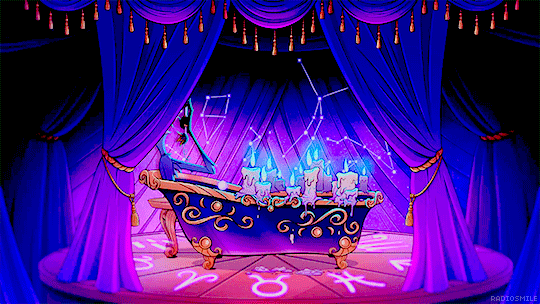
MYTHOLOGY FANTASY
Angels, Demons, Gods, the Underworld, mythological heroes, this is a supercategory that encompasses everything from The Chronicles of Narnia to Supernatural, as well as Good Omens, American Gods, Sandman, Rise of the Guardians, Percy Jackson, Paradise Lost, Helluva Boss and Hazbin Hotel, Smite: Battleground of the Gods, Teen Titans, Dante’s Inferno, and Lore Olympus. Some people get squeemish about lumping Judeo-Christian ideologies in with Mythology (even though it is a mythology) such that the Christian sub-category sometimes gets called Religious Fantasy or Bible Fantasy. But regardless, this is the category for any sort of fantastical work in which supernatural forces are at work. Some divide this section differently. For instance, some will say that since faeries are part of Irish mythology that faeries count as part of mythology fantasy, while others will argue that this is more for the religious aspect of fantasy, with things like vampires and faeries relegated to a subcategory of more generic fantasy creatures.

ARTHURIAN FANTASY
The story revolves around Arthurian mythos. Whether it’s set in the real world of Britain, a fantasy counterpart to Britain, or in some author-created setting, King Arthur is still King Arthur. Sometimes, though very rarely, Arthurian stories have little to no magic, fusing this subgenre with Historical Fiction and not Historical Fantasy. While Arthurian mythos has evolved over the years, the big players are practically household names. Most people are unfamiliar with Sir Galehaut and Sir Dinadin, but almost everyone recognizes Arthur, Guinevere, Lancelot, Merlin, and all the other big players in Arthurian folklore. However, Arthurian myth effectively spans the entire breadth of the Medieval Period, first being mentioned in the Annaels Cambriae which places Arthur in 6th Century Britain, and his stories continued to be written until Le Mort d’Arthur in 1485. Keep in mind, the Medieval Period is from 476 - 1500, and Arthurian mythos spans about 800-900 of those 1,024 years. Due to his story spanning so much time, many elements of Arthur’s story have been forgotten or quietly put aside over time. Try to tell someone that Arthur put every newborn born in the month of may on a boat and sank it to prevent the prophecy of Mordred from coming true, and you’ll probably get a bunch of horrified looks from people who swear up and down that the Good King Arthur would never do anything so cruel. Even other elements shifted around. Ask who mordred’s parents are, and you could argue Arthur, Morgan le Fey, Morgause, Anna, King Lot, and more. Depending on how deep down the rabbit hole you’re willing to go, you can read stories of King Arthur fighting his nephew Oberon for control of Fairyland. Arthurian mythos, like mythology fantasy, tends to get the curbside drive-by approach. People repeat the elements they’ve heard a million times, while never dusting off any of the lesser known elements that would give the story a breath of fresh air.

FABLE FANTASY
Technically, all Arthurian Fantasy falls under this umbrella. Fable Fantasy is the genre term for fantasy based on fables, folk tales, and folkloric figures. Robin Hood, Reynard the Fox, Fairy Tales, Mother Goose, Baba Yaga, if it has persisted through generations of storytelling, and has had a lasting impact on the cultures that know the story, it can be considered a Fable Fantasy. Any story that pulls from these elements can likewise be considered Fable Fantasy because they are pulling from these fabled origins. So, a retelling of Beauty and the Beast is a Fable Fantasy... unless the storytelling has twisted the story so much that it’s no longer in the Fantasy genre. For more variations of this genre, well-known pop culture characters, much like Robin Hood and Fairytale characters, can be considered Fable Fantasy. So, Frankenstein’s Monster, Dracula, Santa Claus, the Grim Reaper, Peter Pan, the Phantom of the Opera, the Wizard of Oz, and other commonly retold folk characters can be thought of as more contemporary Fable fantasies. As such, both Wicked and The Phantom of the Opera can be considered Fable Fantasy musicals, as well as the more obvious Into the Woods. Once Upon a Time and the Fable comic series are both modern Fable Fantasy stories. Not all Fable Fantasy narratives are retellings of classic folktales. Peter Rabbit, Alice’s Adventures in Wonderland, Peter Pan, and The Wizard of Oz have all become widely considered folkloric staples, despite being written in the 19th and 20th centuries. Over the Garden Wall, a Cartoon Network miniseries from 2014, is considered to be a modern fairy tale, despite not being an adaptation of any other story, but instead using the tropes and ideas common to traditional old-school fairy tales. When they enter the public domain, I suspect that Dr. Seuss’ characters will likewise be effectively Fable Fantasy, well-known characters that see use and reuse over and over again in other media. Shrek and Disenchantment take a satirical approach to Fable Fantasy, poking fun of Disney and other fairytale narratives and tropes.
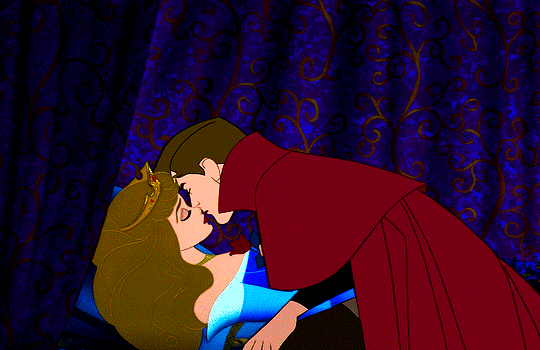
HISTORICAL ROMANTICISM
This setting often goes hand-in-hand with Arthurian Fantasy and Fairy Tales. This is any story that romanticizes and glorifies life in a historical setting. Popular variants include Medieval Romanticism, stories which romanticize medieval settings, Victorian Romanticism or Edwardian Romanticism, for stories that romanticize the time period between 1837-1913, and Period Romanticism, which is more of a blanket term that glorifies the eras popular with Period movies, namely, the 19th century, but sometimes earlier as well. Full of handsome princes, fair damsels, large palace-like castles, and knightly codes of honor, historically inaccurrate period gowns, debutante balls, and steamy Jane Austen-style love affairs, this story paints the past with the most optimistic and flattering image possible. Everything is flowery, poetic, and awe-inspiring. This is the type of setting Sansa Stark thought she was in at the start of A Game of Thrones before G.R.R Martin pulled the rug out from under her and revealed Westeros to be a Cynical Low Fantasy. By the very virtue of the company’s child-friendly marketing, Most Disney movies, and by extension, most movies set in the past aimed at children can likewise be categorized as Historical Romanticism, as they brush the darker side of history under the rug. The Princess Bride, Bridgerton, Don Bluth’s Anastasia, and most versions of Robin Hood and Arthurian mythos fall into this category. For contrast, Downton Abbey is not Edwardian Romanticism even though it tries to make life in the 1910s look glamorous, it’s also not afraid to blatantly point out the economic and socio-political issues that were going in in the world at the time. Downton Abbey does not sugar coat the darker side of history, and can therefore not be considered Historical Romanticism.

HISTORICAL CYNICISM
The exact opposite, Historical Cynicism is the name I give to settings that use the trope “The Dung Ages”. Like Historical Romanticism, the most popular variant of this category is Medieval Cynicism. These settings seek to make life in historical time periods look as miserable and depressing as possible. They are designed to make life seem bleak, undesirable, and disgusting. Monty Python and the Holy Grail and Disenchantment take a comedic approach to this, while A Song of Ice and Fire gives a more Epic Fantasy take. Sweeney Todd makes life in Victorian London look positively putrid, and that’s without the cannibalism subplot. The Witcher games seem to merge Medieval Cynicism with Dark Fantasy and Horror Fantasy. This subgenre hinges on Dark Fantasy, but the two are distinct from one another. Expect plenty of plagues, muted color pallets, a cruel aristocracy that enjoys crushing the lower classes under its heel, and mud or dung on everything.
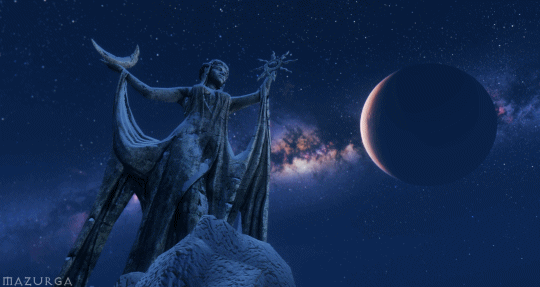
HIGH FANTASY
Magic and fantastical elements are abound in this setting. Expect wizards, dragons, fantastical races, and more. Very frequently overlaps with Epic Fantasy, though they are different. The Lord of the Rings is classic High Fantasy. Most Dungeons & Dragons settings are also High Fantasy, as is The Legend of Zelda. Avatar: the Last Airbender is a High Fantasy Wuxia show, though Legend of Korra veers more toward Historical Fantasy, Steampunk, and Magitech Fantasy with its 1920s Shanghai meets New York City hub location of Republic City. The Elder Scrolls is also a High Fantasy, with plenty of elven races, the Beast Races, and star signs that actually impact those born under them. Each province has its own sort of vibe or subgenre, with High Rock being more Medieval Romanticism while Skyrim is more Dark Fantasy or Medieval Cynicism, but as a whole, Tamriel falls under the High Fantasy umbrella.

LOW FANTASY
A medieval setting where magic and fantastical elements are rare, if not nonexistent. A Song of Ice and Fire is an excellent example. Magic is real and does exist, but it only rarely comes into play. Magic is extremely scarce, and most people one might meet are humans. Even the sight of someone casting the simplest spell is so rare in Westeros that it’s practically unheard of, and the few supernatural elements that do exist in the setting live far out into the wilderness, rarely being seen by people. It’s quite rare to find completely fictional fantasy settings with no magic whatsoever, but they do exist.

EPIC FANTASY
This is any fantasy story on an epic scale. I’m talking well over 50+ named characters. A Song of Ice and Fire, The Wheel of Time, Lord of the Rings, all of these are Epic Fantasy. Yes, these stories usually end up with long book series and a lot of words behind them, but I am defining a genre, not a reading level. Epic Fantasy is about scope, not page length. Common sights in Epic Fantasy are grand battles, multiple POVs, world-spanning events, extremely high stakes, very powerful players in the narrative, and The Final Battle Between Good and Evil.

QUEST FANTASY
Any fantasy work which is primarily driven by The Epic Quest. Often overlaps with Chosen One narratives. Lord of the Rings, Eragon, The Legend of Zelda, Avatar: the Last Airbender, and the Percy Jackson books are all examples of Quest Fantasy. The bulk of the narrative is centered on The Journey and the trouble the heroes run into along the way, or are otherwise all about The Adventure, not the destination. Our band of heroes have a goal given to them and the story is focused on following the heroes on their journey. However, this is not strictly a Chosen One category. The Legend of Korra is a Chosen One Fantasy, but is not a Quest Fantasy because Korra’s main objective changes every season. Percy Jackson toes the line due to the Oracle’s prophecies, but I wouldn’t call him a Chosen One because his birth wasn’t written in the stars or anything. He just happens to be a child of Poseidon and at the center of the story. If you switched him out for Nico di Angelo or Jason Grace, the story is still functional. In Lord of the Rings, Aragorn is the True King, but Frodo is the protagonist, so I wouldn’t call Lord of the Rings a Chosen One Fantasy either. This can also tip into other genres. Monty Python and the Holy Grail is a Quest Fantasy. The entire premise of the movie is Arthur and his knights questing for the Holy Grail. Likewise, The Princess Bride is all about Wesley’s quest to rescue Princess Buttercup from Prince Humperdink. Treasure Planet is a steampunk quest fantasy telling the story of Jim’s search for Flint’s treasure, where the journey there is the bulk of the story. Sinbad: Legend of the Seven Seas is a quest fantasy with elements of Historical Fantasy and Mythology Fantasy all about Sinbad’s perilous voyage to the edge of the world to save his friend’s life.

DARK FANTASY
It’s like normal Fantasy, but bleaker and darker. The Witcher and Skyrim are good examples of Dark Fantasy, where monsters roam the wilderness, and people live in fear of the unknown beyond the safety of their villages. The general tone is more cynical, desolate, or hopeless. Some Dark Fantasy is more about just being gloomy or creepy. The movies Labyrinth and Dark Crystal are two good examples of a Dark Fantasy that’s less bleak as they are weird, yet still dark. The Black Cauldron is a perfect example of a Dark Fantasy with a dreary and macabre aesthetic paired with a genuinely horrifying necromancer villain. Pan’s Labyrinth is another good example of a Dark Fantasy. Over the Garden Wall and A Tale so Dark and Grimm are both Dark Fantasy stories as well as Fable Fantasies, reveling in the darker aspects of Grimm fairy tales.

HORROR FANTASY
It’s like Dark Fantasy, but scarier. Expect there to be horrifying monsters unlike any seen on earth. Your protagonist is probably either hunting or being hunted by something horrible. Either a monster is trying to kill them, the world is trying to kill them, the gods or demons are trying to kill them, or magic is trying to kill them. Again, The Witcher is a great example of Horror Fantasy. Geralt is a hunter of monsters, and often fights things like Werewolves, ghouls, wraiths, and lesheys. Red Riding Hood (2011) is a great example of a vaguely medieval Horror Fantasy. Depending on where you stop the line at what’s horror, what’s fantasy, and what’s Horror Fantasy, you could justify just about anything as Horror Fantasy. From The Elder Scrolls V: Skyrim with its undead Draugr and vampire clans, to Resident Evil VII with its vampires, or even certain Scooby-Doo! media (though Scooby-Doo! is certainly on the mild end of horror.)

PARANORMAL FANTASY
Unlike Dark Fantasy or Horror Fantasy, Paranormal Fantasy takes horror elements and spins them to be more romantic. This is where you’d slot in romantic or atmospheric ghost stories. Tales of witches and vampires in a macabre setting where they’re not the villains. The Addams Family fits the Paranormal Fantasy, as does Sweeney Todd, Sleepy Hollow, The Phantom of the Opera, Hotel Transylvania, most Scooby-Doo! media, Beetlejuice, the Halloweentown movies, The Nightmare Before Christmas, or Hocus Pocus. Basically, if it could be a child-friendly Halloween story, or was made by Tim Burton, it’s probably Gothic Fantasy. I guess you could also call this Monster Fantasy, Gothic Fantasy, or Spooky Fantasy.
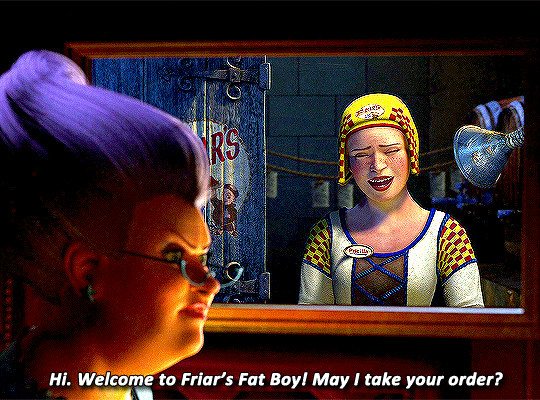
CONTMPORARY FANTASY
The setting is medieval with castles and princesses, but there’ll also be modern conveniences or nods to pop culture in the land and setting. Dave the Barbarian is a good example of this. The royal family are all barbarians (which basically just means vague warriors that wear fur loincloths), but then they also have malls, and Dave made a megaphone out of a squirrel, some string, and a megaphone. Shrek does this too, especially in Far Far Away with nods to Starbucks and Burger King, among other modern franchises. Disenchantment also uses this as a basis for comedy. Typically, Contemporary Fantasy only uses modern conveniences in a medieval setting as more or less sight gags, punchlines, or to poke fun of corporations and consumerism. These are also the fantasy stories most likely to reexamine tropes and shine a critical light on the genre, whether by showing the farm-boy turned king being royally inept, the mental issues caused by locking the princess in a tower for years of her life, or how quickly princesses married the first man that came along without so much as a conversation beforehand.
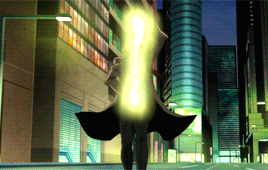
URBAN FANTASY
The wizard has a smartphone, the prince has a Grindr, and the city watch patrol the streets on motorcycles. A standard fantasy world has come to the modern age, with skyscrapers, internet, cars, and cellphones. The familiar world gives the audience a firmer foot to ground themselves in this sort of story, compared to something set in the past, but it has its own hurdles. Namely, a modern world still needs a rich history. You also need a story that can’t be solved with a gun and an internet connection. Urban Fantasy is a very broad genre, from Hidden World Fantasy like Percy Jackson or Harry Potter, to Merged World Fantasy like RWBY. There’s also some head scratchers like the Warriors Cats books. It’s definitely Urban Fantasy. A cat society living in the forest is a fantasy, and the story is set in our modern contemporary world. But labeling the series beyond Urban Fantasy is where it gets tricky. Isekai borders on Urban Fantasy, as the magical overlaps with the modern world. The Magic Treehouse and the Arthur Spiderwick Chronicles are two great examples of Urban Fantasy in children’s literature. Goosebumps is Urban Horror Fantasy.

ISEKAI FANTASY
These are stories in which an ordinary human (or group of humans) are transported to another world in order to learn a lesson, grow, and come back home wiser, stronger, and ready to face the problems they ran away from. The Wizard of Oz, Peter Pan and Wendy, Alice’s Adventures in Wonderland, as well as movies like Stardust, Coraline, and Spirited Away, or TV shows like Over the Garden Wall, The Owl House, and Amphibia are all prime examples of this type of story. The Chronicles of Narnia is an excellent example because as the series goes on, the older Pevensee children stop needing to go back to Narnia. By Voyage of the Dawn Treader, Peter and Susan have learned all they need to from the other world, and don’t go back, leaving only Edmund and Lucy to go with their cousin instead. Because their arcs are over, they have no reason to return.

ROMANCE FANTASY
It’s a romance novel with supernatural elements. Usually, it’s a human falling in love with something inhuman, which we often call Paranormal Romance. However, this can also include stories of a fairy falling in love with a dwarf, so there’s a wider net here. This isn’t just a story with a romantic subplot, this is your Romeo and Juliet type love stories. Your Beauty and the Beast retellings. The romance is the main plot, and the supernatural elements simply make the romance more exciting or the problems of the couple more entangled in cultural baggage. Obviously, Twilight is a popular example, as is The Cruel Prince, The Captive Prince, and Of Beast and Beauty by Stacey Jay.
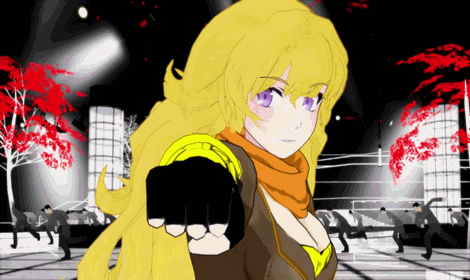
MAGITECH FANTASY
This is when a fantasy setting has magic-powered technology. The guardians and Divine Beasts from Breath of the Wild are a fantastic example of Magitech in a medieval fantasy setting, as are the steam-powered automatons of the Dwemmer in The Elder Scrolls. The Legend of Korra sort of fits here. The world of Avatar has advanced to include airplanes, cars, and radios, none of which are powered directly by bending, but benders do work in power plants, performing lightning bending to generate electricity. It’s certainly a middle ground between steampunk and magitech fantasy. However, the world doesn’t have to necessarily include technology, any setting where magic is a power source for anything can work. Jak and Daxter: The Precursor Legacy is a great example of Magitech Fantasy. Eco is a natural magical resource that give magical powers and effects. So, having doors that open when exposed to the electrical energy of blue eco makes sense. And while it’s never stated, Jak II has many automatic doors in Haven City that may very well run on an electric power grid fueled by blue eco veins. But eco largely gets dropped in the sequel games in favor of guns, though the guns themselves may actually be powered by eco as well. So it’s hard to say. RWBY surprisingly fits into Magitech Fantasy. Like Eco, Dust is a magical natural resource that can be used to create magical effects. The world is full of airships, shape-changing weapons, bullets and other weapons being infused with dust to give them magical effects, and Penny, a definitely real girl.

GASLAMP FANTASY
This is what happens when Steampunk has just enough fantasy elements to land in the Fantasy section. Gaslamp Fantasy is any fantasy story set in the era of gaslamps, while still incorporating fantastical elements. Dracula, Springheel Jack, Mary Poppins, Peter Pan, Sherlock Holmes vs Dracula, basically, as long as it’s set in a Victorian setting and has supernatural elements, it counts as Gaslamp Fantasy. However, it’s definitely one of the less popular subgeneres, and I couldn’t really name any others.
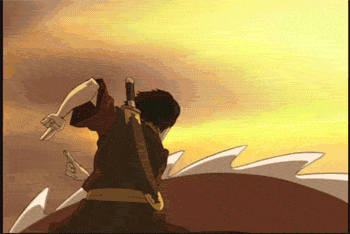
WUXIA
A fantasy setting that focuses more on East Asian history, folklore, and mythology to craft its setting. Wuxia is a broad term, including everything from Spirited Away to Crouching Tiger, Hidden Dragon and Dragonball. However, often times in fantasy, European-inspired regions are complicated and diverse, while Asian-inspired regions are homogenizing, if not orientalist. We can differentiate Irish, Scottish, and Welsh folklore from English, but somehow, not treating all Asian cultures like they’re the same is too taxing for some writers. So, if you’re going to tackle writing Wuxia Fantasy, do your homework, try to make the cultures thorough and intricate, and don’t profess yourself an expert on another person’s culture if you’re not Asian yourself.
316 notes
·
View notes